Deck skirting does far more than hide a deck’s underside—it frames the whole outdoor room, deters critters, lets air circulate, and can even double as storage or planting space. From classic lattice work to contemporary metal, stone, and greenery, today’s options are broader, tougher, and easier to install than ever, with low-maintenance composites and PVC leading 2025 trends. Thoughtful choices in material and pattern also help meet ventilation codes, match your home’s style, and fit every budget. Below you’ll find twenty distinct, 100-to-120-word ideas—each one a standalone guide—to spark your next deck-skirting upgrade.
1. Classic Diamond Lattice Deck Skirting

A classic never disappoints: diamond-pattern lattice deck skirting delivers instant cottage charm while allowing generous airflow to keep framing dry. Pressure-treated wood versions stain easily, but PVC or vinyl panels resist rot and insects for decades with just a hose-down. Framing the lattice with 1×4 trim and adding a hinged access panel makes maintenance a breeze without breaking the old-school look. Paired with matching lattice privacy screens on top of the railing, the design feels cohesive from ground to rail cap. To prevent sagging, install backing cleats every 24 inches and keep the bottom edge two inches off soil or mulch for drainage. DeckGuru TimberTech
2. Modern Horizontal Slat Deck Skirting
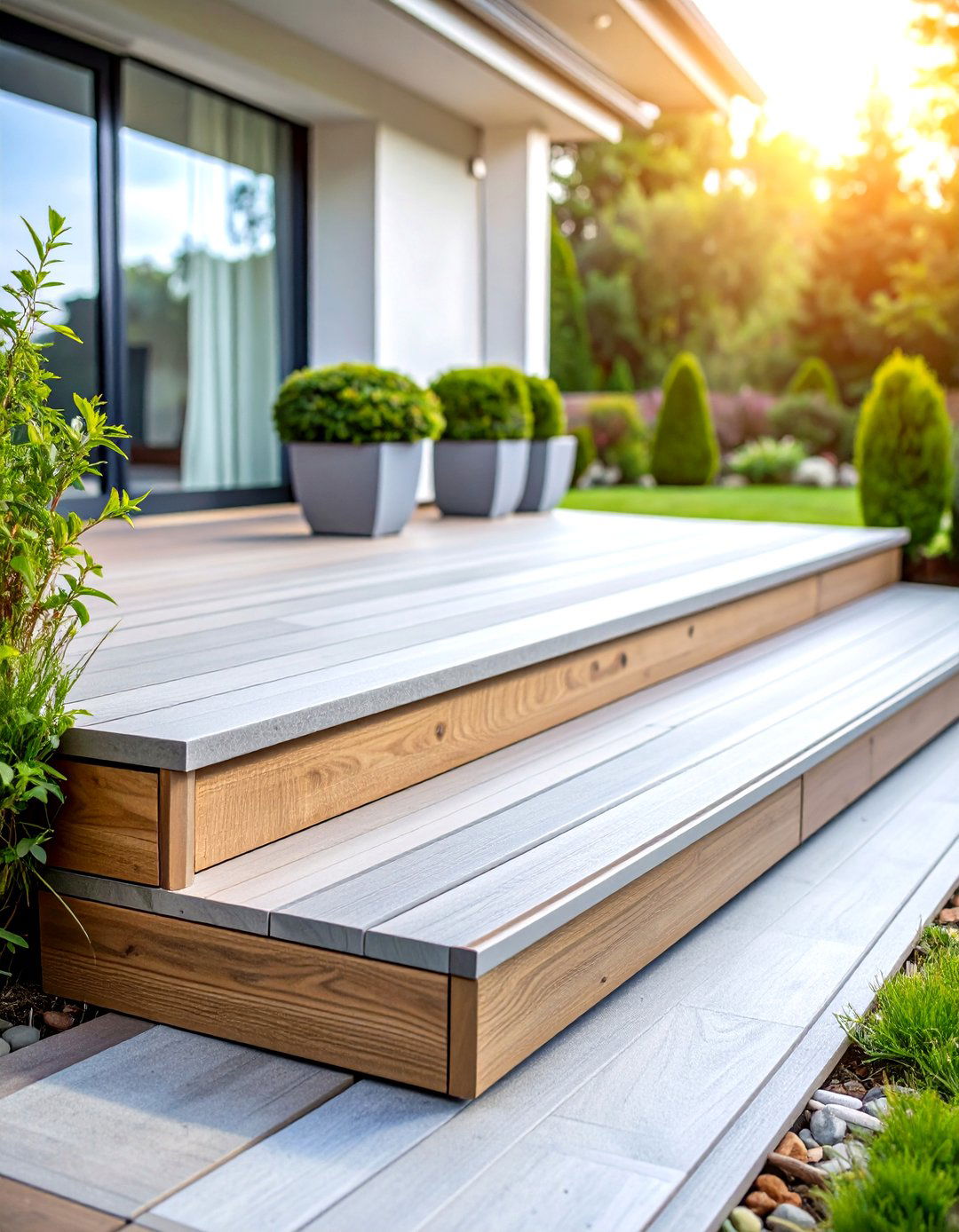
Consider sleek horizontal wood or composite slats for deck skirting that echoes today’s modern-farmhouse façades. Narrow 1×2 or 1×3 boards spaced ½ inch apart run parallel to the deck boards, visually elongating the structure and delivering more privacy than lattice while still venting moisture. Staining adjacent slats two complimentary tones—say, warm cedar and espresso—adds depth without heft. Mount the slats to a simple 2×2 support frame with hidden screws or a clip system to keep lines clean. Composite versions resist warping, and the continuous horizontal lines make future access panels almost invisible when cut along a slat.
3. Vertical Wood Slat Deck Skirting
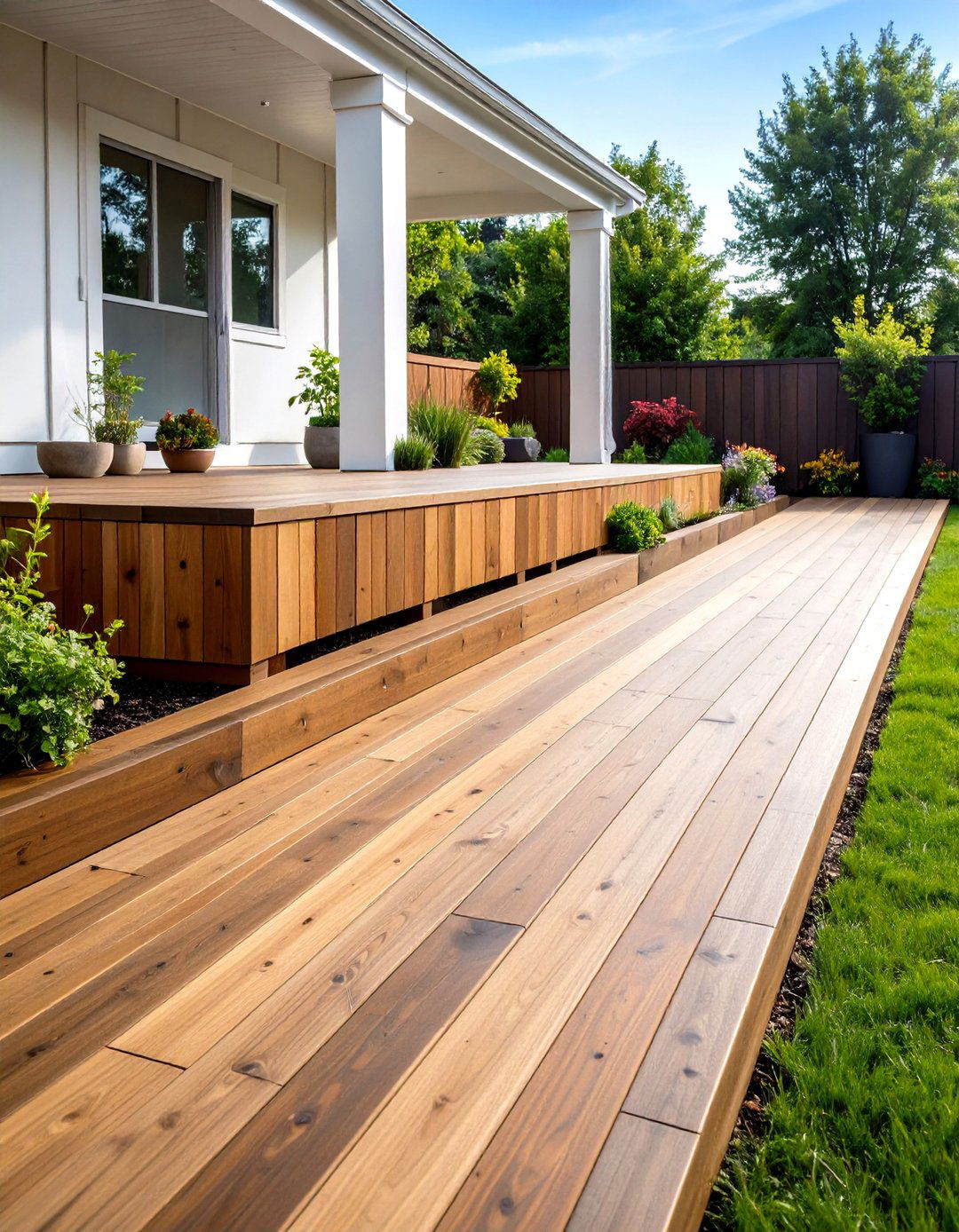
Vertical deck-skirting slats play up height, making even low decks feel loftier. Rip 1×6 boards into 2¾-inch strips, then set them ¾ inch apart on blocking cleats so air moves freely. A dark-charcoal stain contrasts beautifully with lighter decking, giving modern Japanese-influenced vibes. Always install a critter-mesh strip behind the lowest rail to block rodents that might squeeze through the gaps. If you plan storage below, incorporate a full-height hidden door by hanging slats on a frame with concealed hinges and magnetic catches—guests will never spot it. Vertical alignment also sheds rain splash quickly, extending finish life. Reddit Trex Rain Escape
4. Decorative Metal Panel Deck Skirting

For bold texture and extreme durability, decorative laser-cut aluminum or galvanized-steel panels turn utilitarian deck skirting into eye candy. Choose botanical, geometric, or mid-century screen patterns, then powder-coat them to match railing balusters. Metal refuses to warp, so panels can span wider bays—helpful on tall walkout decks where lumber would need extra framing. Anchor panels to a treated-wood frame with corrosion-resistant screws backed by neoprene washers to prevent galvanic reactions. Because perforations vary by design, confirm that ventilation openings equal at least 1 square foot per 150 square feet of deck surface to satisfy airflow codes before ordering. Pinterest
5. Corrugated Metal Deck Skirting
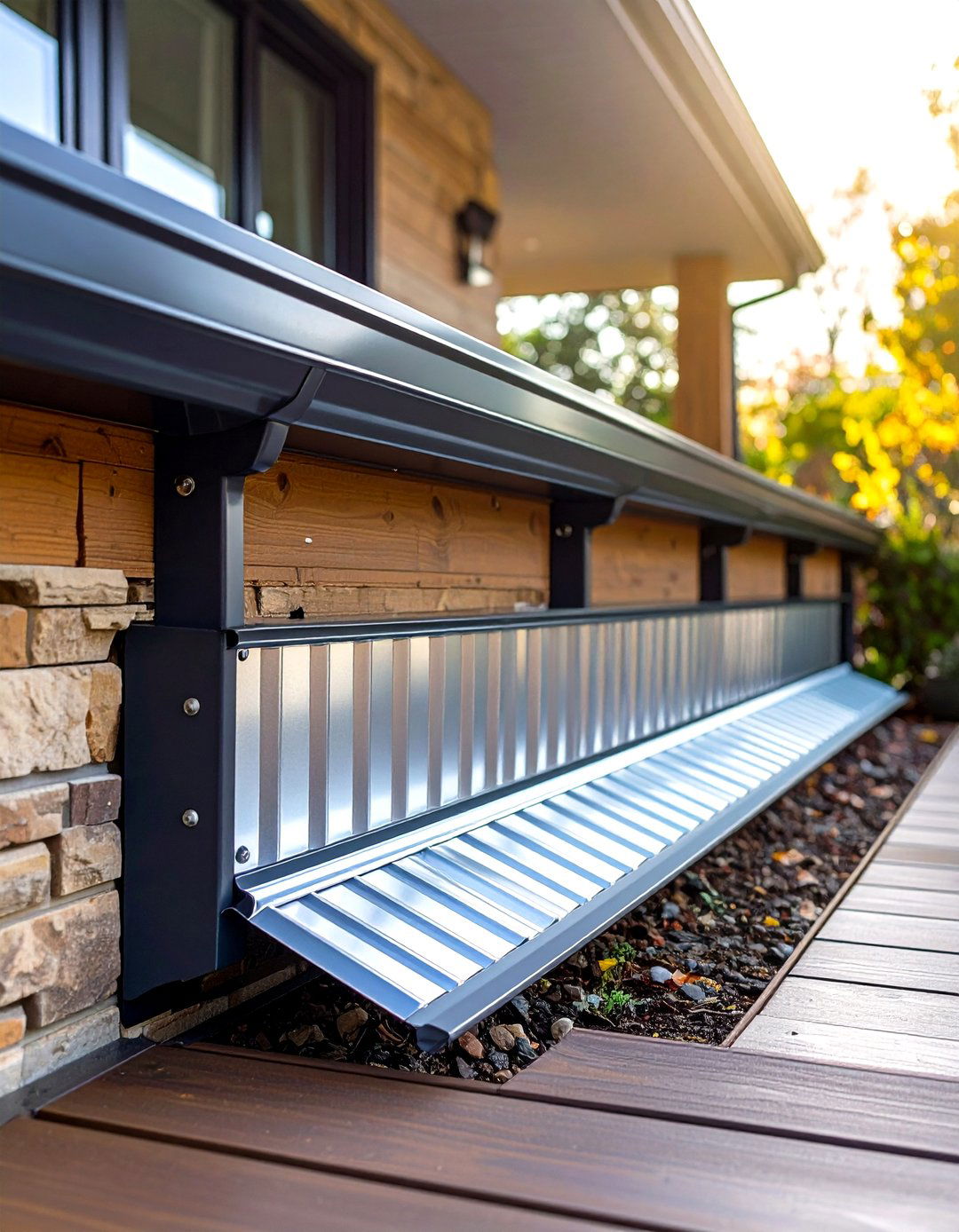
Unlike flat sheet steel, corrugated-metal deck skirting ripples with industrial character and stands up to snow banks and weed-whacker strikes. Purchase 36-inch-tall galvanized or blackened tin wainscoting rolls and cut to length with aviation snips; the ribs add strength so mid-span blocking is minimal. Spray-foam the panel’s backside at joist intersections to silence “ping” noises in high winds, then finish edges with inexpensive J-channel for a tidy picture-frame look. Corrugated metal reflects light, brightening shaded under-deck patios, especially when paired with Edison-bulb string lights. A clear organic linseed sealant slows patina if you prefer the initial shine.
6. Faux Stone Panel Deck Skirting
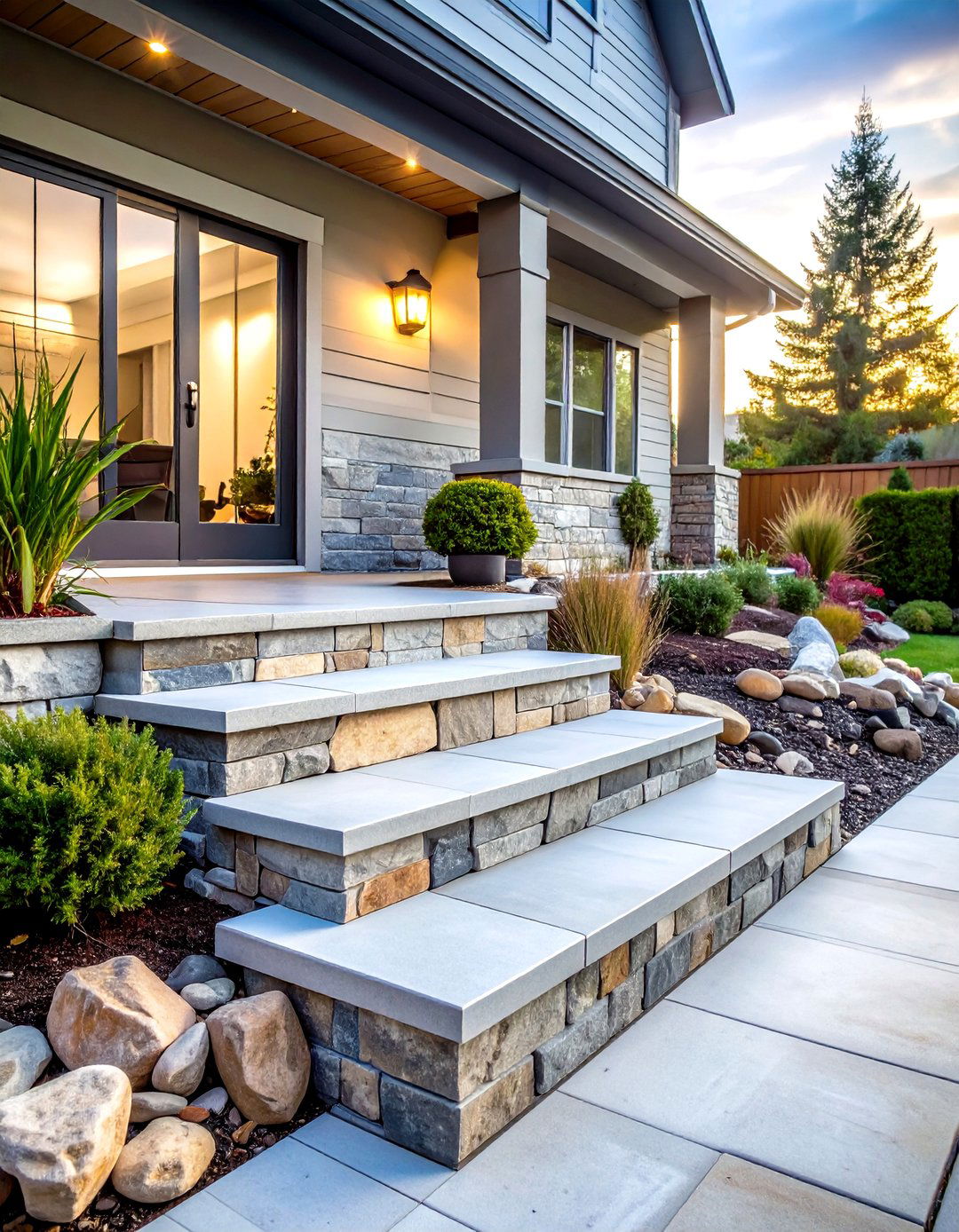
If masonry prices make you wince, lightweight polyurethane faux-stone panels clip together to give deck skirting real-rock realism at roughly one-third the cost. Panels arrive pre-colored in stacked-stone or ledgestone patterns; simply stagger seams, caulk joints, and screw into blocking. Because each panel weighs under two pounds, installation is a solo-friendly weekend job that still stands up to freeze-thaw cycles. Accent the “foundation” corners with wider faux-stone post wraps to tie the scene together. Finish by backfilling river rock against the bottom edge for drainage and to hide the panel terminus, mimicking a full stone footing. GenStone GenStone
7. Composite Board Deck Skirting

Composite-board deck skirting matches today’s low-maintenance decks in both color palette and care regime. Brands now offer narrow fascia-style planks and vented skirting profiles that install with the same hidden-clip tools as surface boards, creating a seamless wraparound look. Unlike wood, composite won’t wick moisture upward from soil, so boards can sit just an inch above grade without rot worries—handy on decks where ground clearance is tight. If your deck spans multiple elevations, use coordinating composite corners to bridge height changes cleanly. Routine soap-and-water washes keep grime at bay; no re-staining required for decades. TimberTech Consumer Reports
8. PVC and Vinyl Deck Skirting
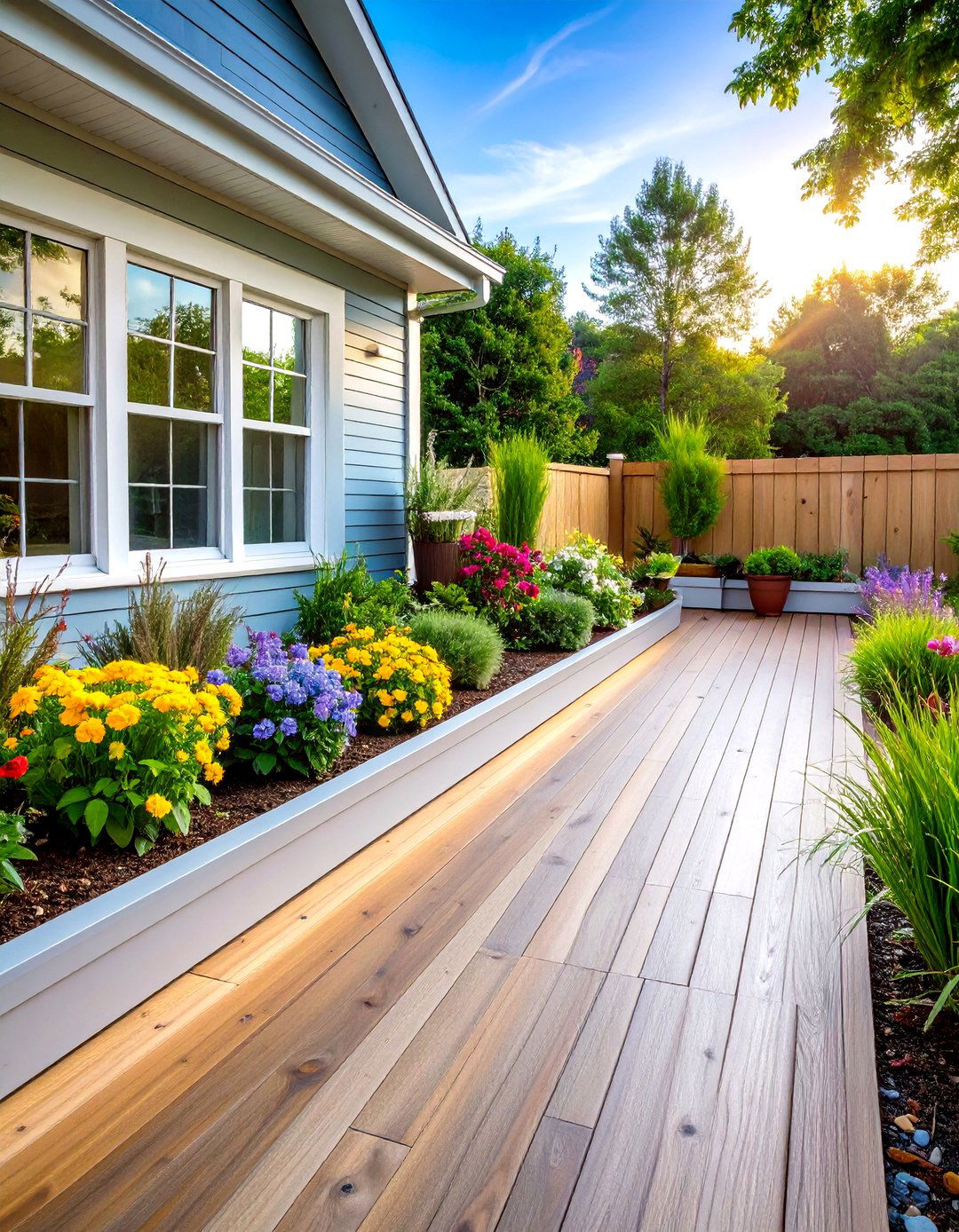
PVC and vinyl deck skirting shine where humidity, salt air, or termites punish organic materials. Solid-core cellular PVC boards, often milled with a crisp beadboard profile, nail like wood yet shrug off moisture entirely. Color-through construction means scratches hardly show, and a damp cloth erases mildew. To vent a closed crawlspace, drill hidden rows of 2-inch holes behind the bottom rabbet—air moves, but pests stay out. White PVC pairs naturally with coastal-style decks, though modern gray and matte black options now exist for contemporary tastes. Expect almost zero upkeep beyond an annual rinse. Enthralling Gumption
9. Board-and-Batten Deck Skirting
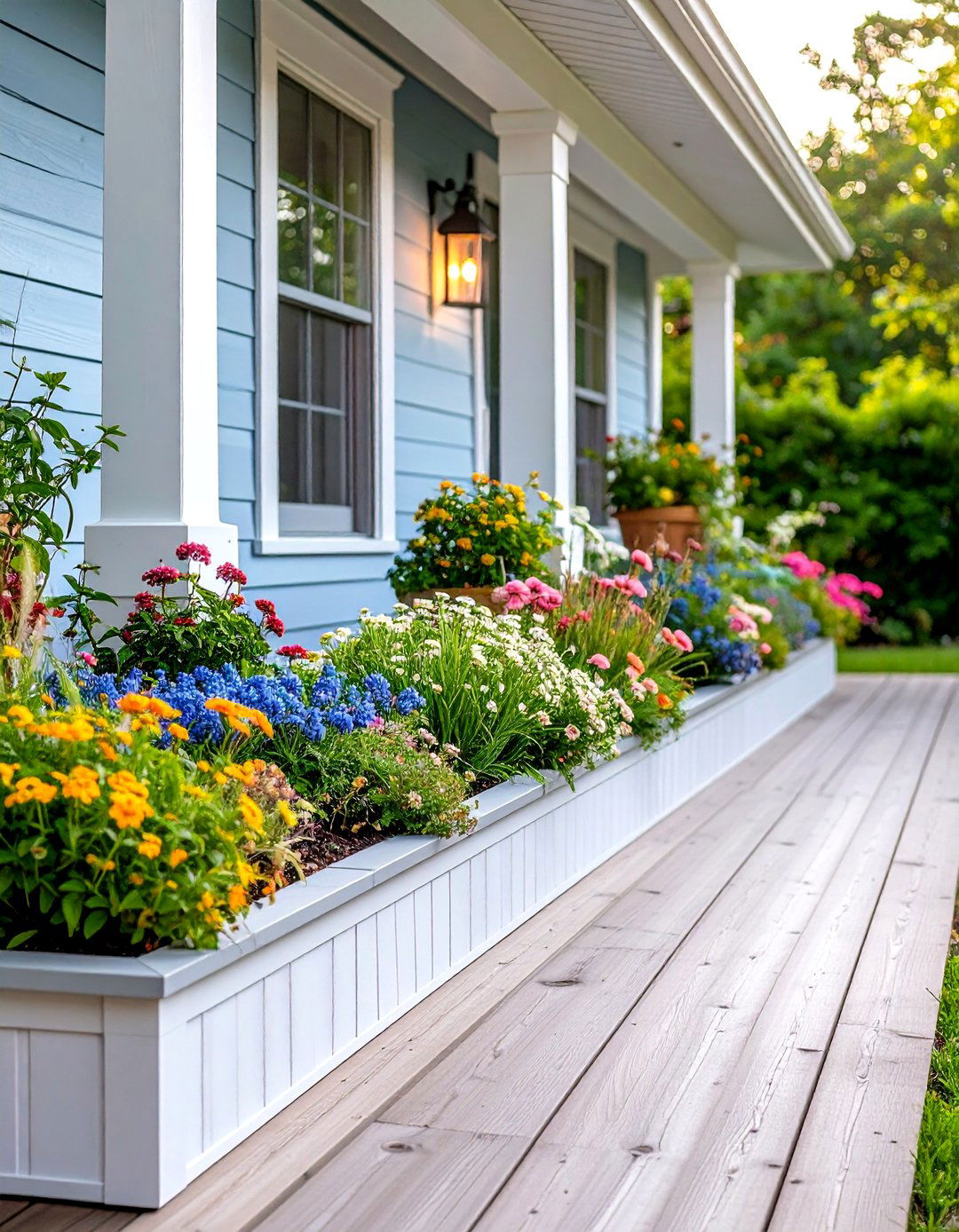
Board-and-batten deck skirting borrows farmhouse charm from siding traditions by overlaying slim battens atop wider base boards. Use 1×8 vertical boards with 1×2 battens every 12 inches, leaving a ¼-inch gap between boards for hidden airflow. Paint the whole assembly in a single tone for a uniform façade, or contrast battens for extra shadow lines. On high decks, install horizontal blocking every 24 inches so boards stay true and don’t cup. Because joints are covered, this style uses budget-friendly #2 pine without telegraphing knots—perfect when stretching dollars yet craving a handcrafted look. Trex Rain Escape
10. Gabion Basket Deck Skirting
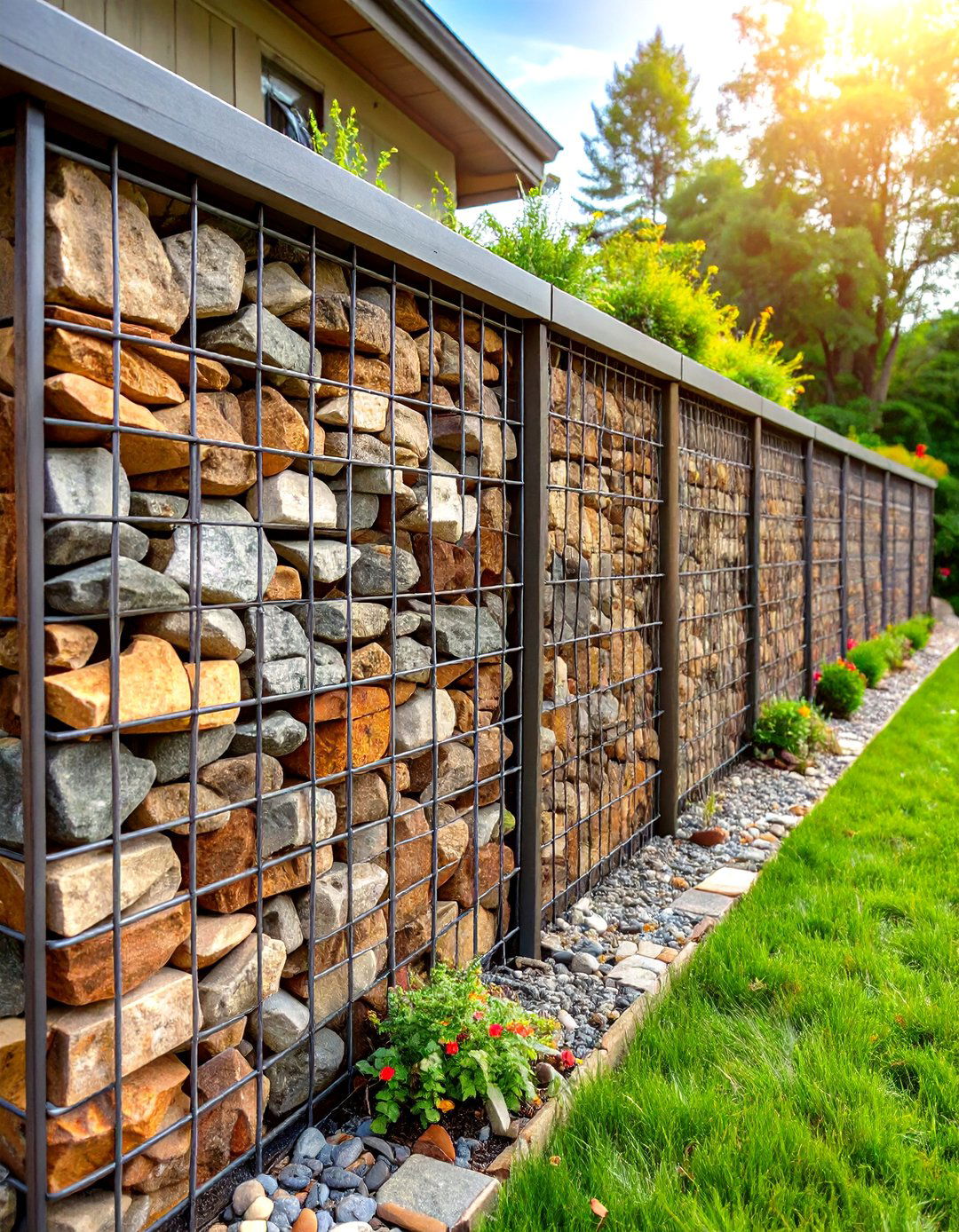
Gabion baskets—galvanized wire cages filled with stone—create rugged, sculptural deck skirting that doubles as a retaining wall on sloped lots. Stack 12-inch-deep modular cages, then hand-pack local river rock or reclaimed brick inside for a sustainable twist. The mass absorbs heat by day and releases it at night, tempering temperatures on adjoining patios. Ensure the base sits on compacted gravel and geotextile fabric for drainage, and specify PVC-coated, heavy-gauge mesh to avoid rust. Because gabions are porous, ventilation is naturally built in, eliminating separate vent grilles entirely. Woman & Home
11. Living Green Wall Deck Skirting
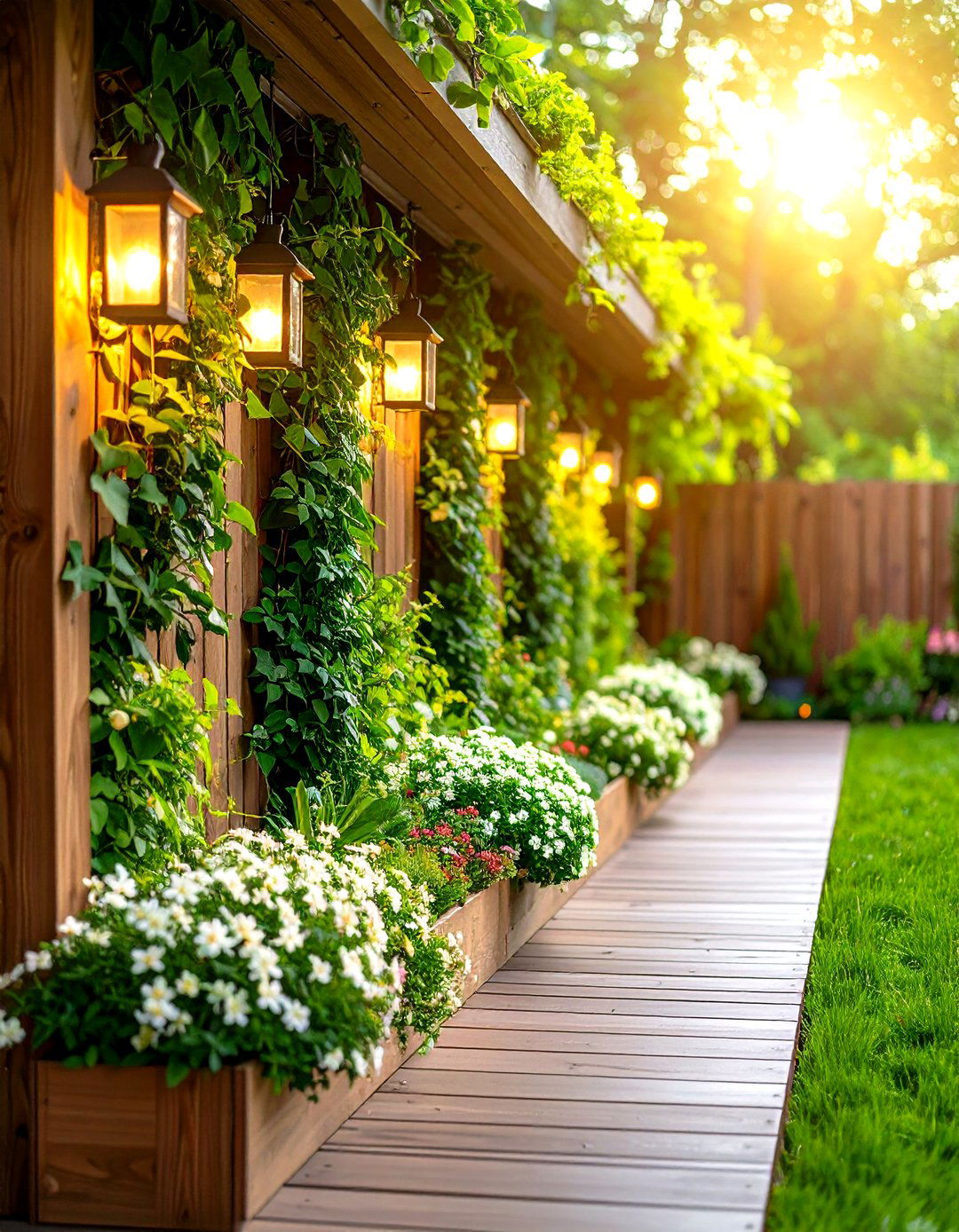
Surprisingly, deck skirting can bloom. Mount a weather-proof vertical-garden frame or simple planter boxes against the joists, then train evergreen vines such as star jasmine or climbing hydrangea for year-round coverage. Drip-irrigation lines tucked behind joists keep roots watered without mess. The foliage masks the deck’s underside, muffles sound, and even filters dust, creating a tranquil micro-garden at eye level when you relax on the patio. Choose container-hardy plants rated two zones colder than your climate to survive winter freezes in above-ground soil. Southern Living
12. Planter Box Integrated Deck Skirting
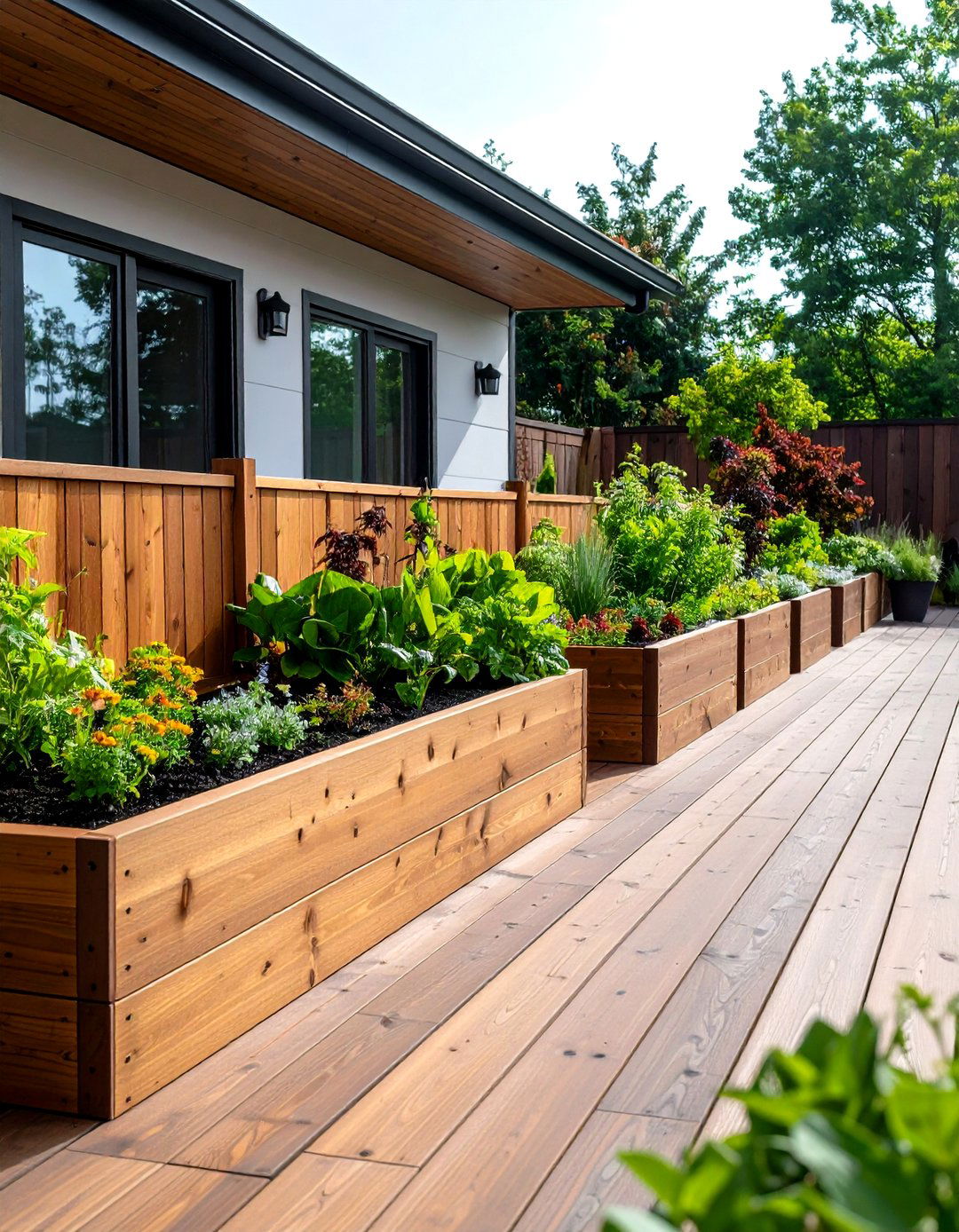
Blending planter boxes into deck skirting offers soft edges and storage. Build raised cedar planters flush with the rim joist, then continue the matching cedar face downward to meet grade, hiding the deck frame while letting herbs spill over the edge. Concealed doors behind the planters provide secret access for hose reels or lawn-chair storage. Line planter interiors with rubber pond liner to protect the skirt boards from constant moisture, and add gravel bottoms for drainage. Partners loving container gardening will appreciate tending basil and blooms without descending steps. Pinterest
13. Decorative Cut-Out Privacy Screens
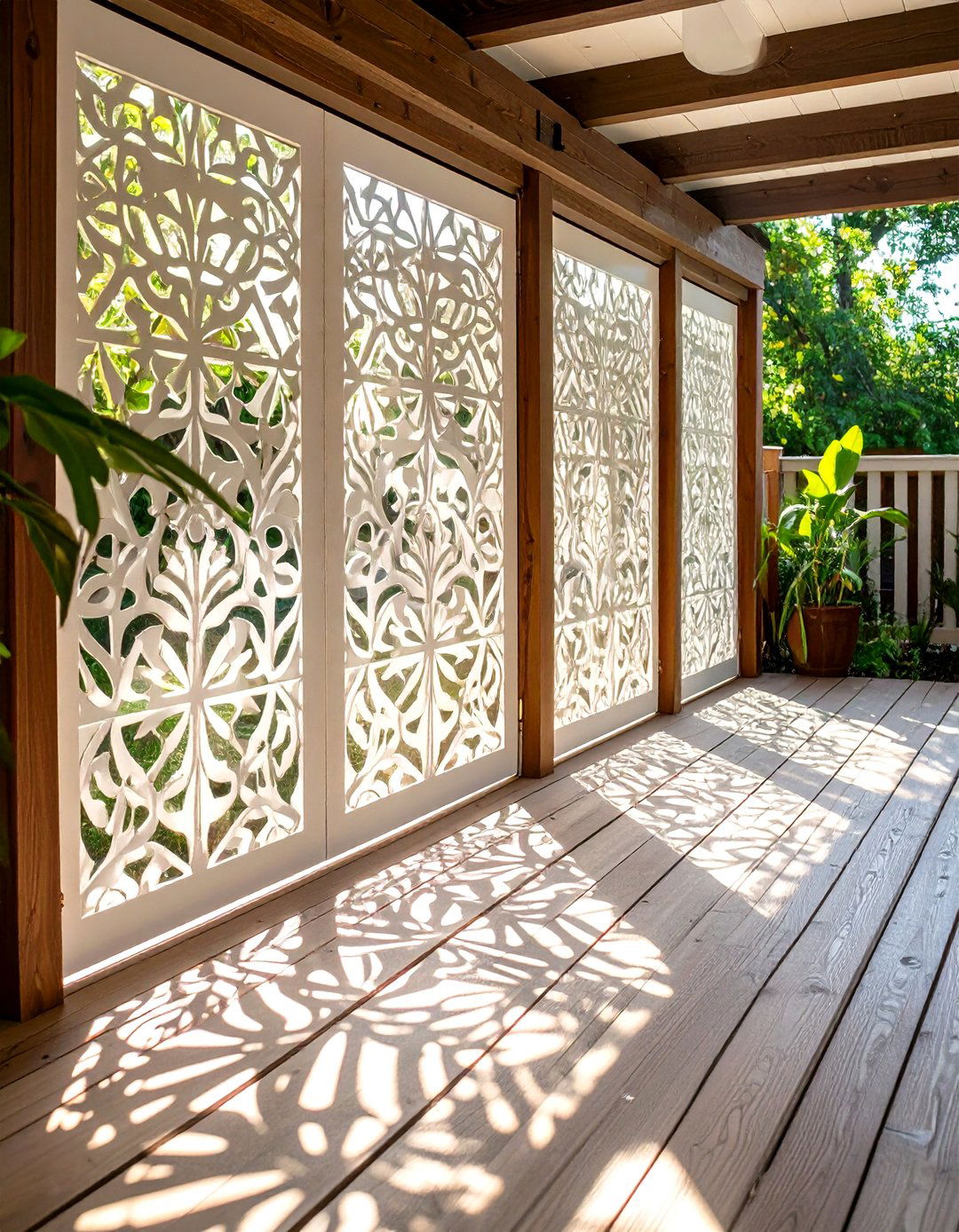
Laser-cut composite or PVC privacy screens now come in modular 24×48-inch panels featuring Moroccan, art-deco, or leaf motifs—perfect for decorative deck skirting that doubles as fencing on ground-hugging decks. Choose deeper panels for shaded under-deck patios to paint playful light patterns at sunset. Because openings vary, check that the net free-vent area meets local code; when panels are dense, simply leave a 3-inch continuous gap at the bottom back-filled with river stone for airflow. Fasten panels with color-matched screws through perimeter framing to preserve clean lines.
14. Mixed-Material Deck Skirting
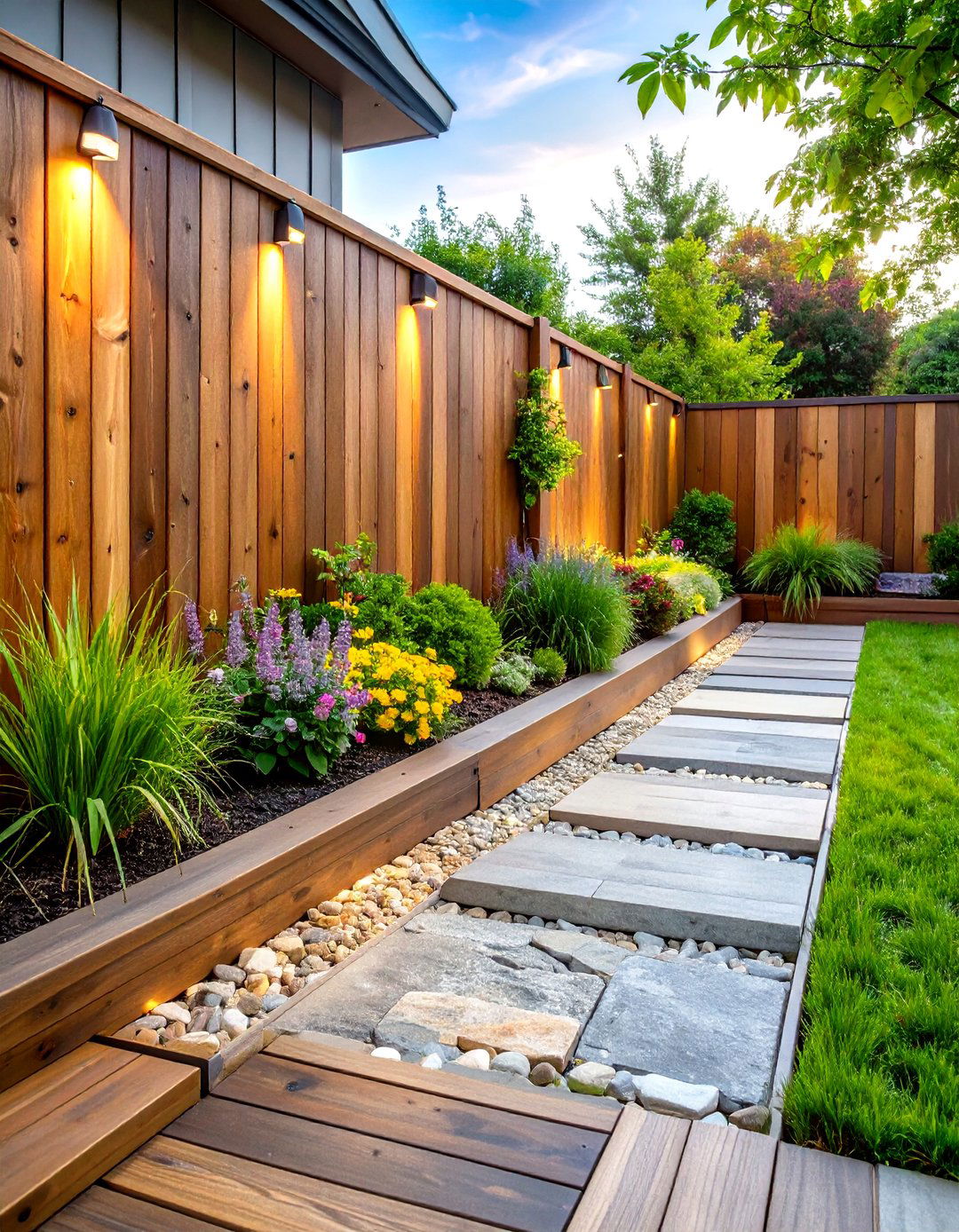
There’s no rule saying you must pick one material. Combine vertical cedar slats with a limestone skirt along the stair landing, or pair charred-wood planks above slim aluminum vent panels for an industrial-meets-organic vibe. Mixing textures breaks large façades into eye-pleasing layers and lets you splurge on premium stone only where traffic is highest. Just maintain a coherent color palette—warm wood marries nicely with cream stone, while cool-gray composite harmonizes with black metal. Secure dissimilar materials to independent framing members so fastener movement doesn’t crack masonry or split lumber. Homebuilding
15. Storage Access Door Deck Skirting
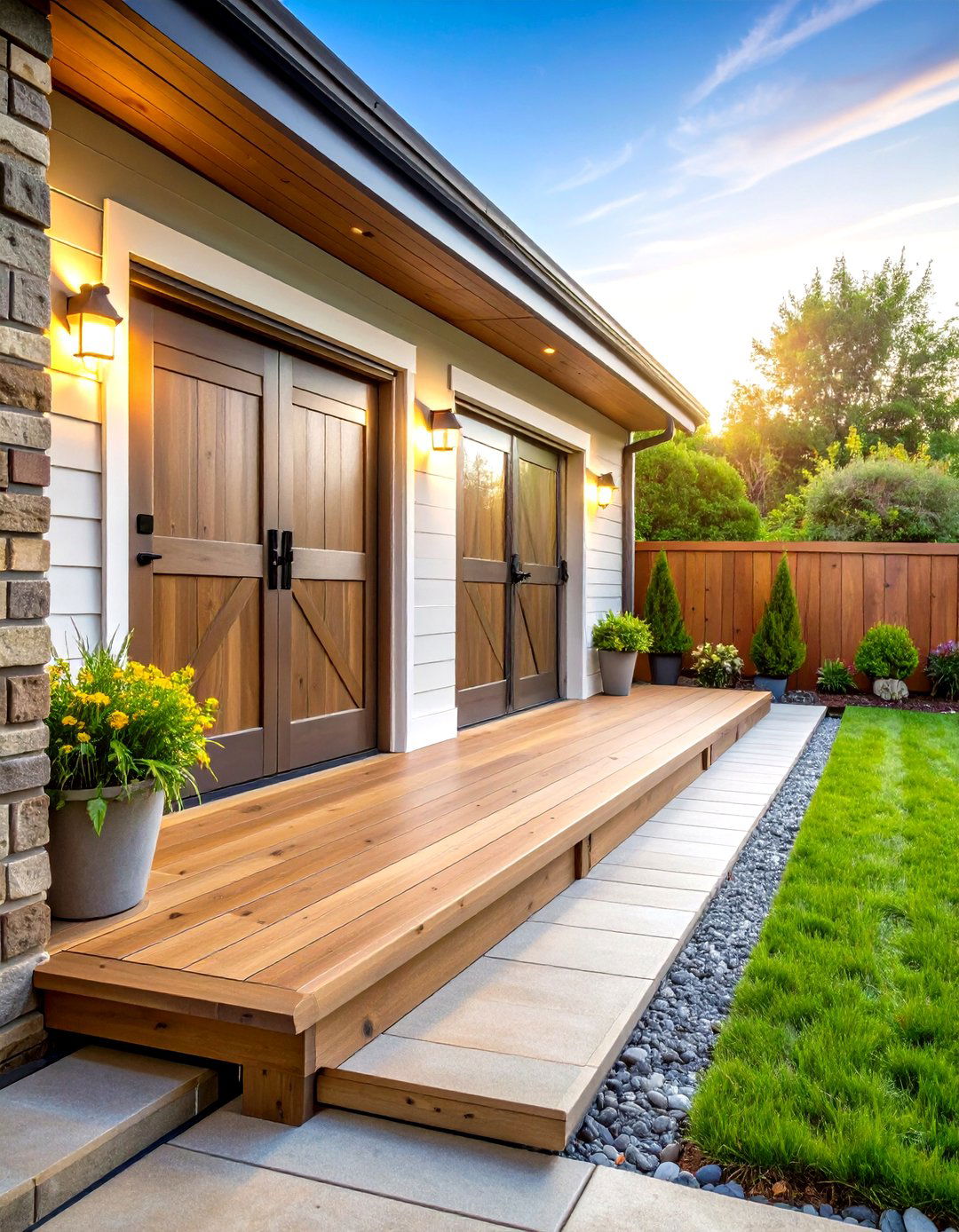
Solid deck-skirting panels can hide a miniature shed. Frame an under-deck cavity with treated 2×4s, clad the exterior in matching skirting boards, then install hydraulic-lift doors or barn-style sliders. Inside, hang lawn tools or stash cushions in watertight totes. Vent the enclosure high and low with screened louvers to avoid musty odors. To disguise the access door, continue trim lines across the opening and use hidden gate latches operated by a magnetic key. This approach declutters garages while allowing the deck to pull double duty as a roof. Trex Rain Escape
16. Horizontal Hog Wire Deck Skirting
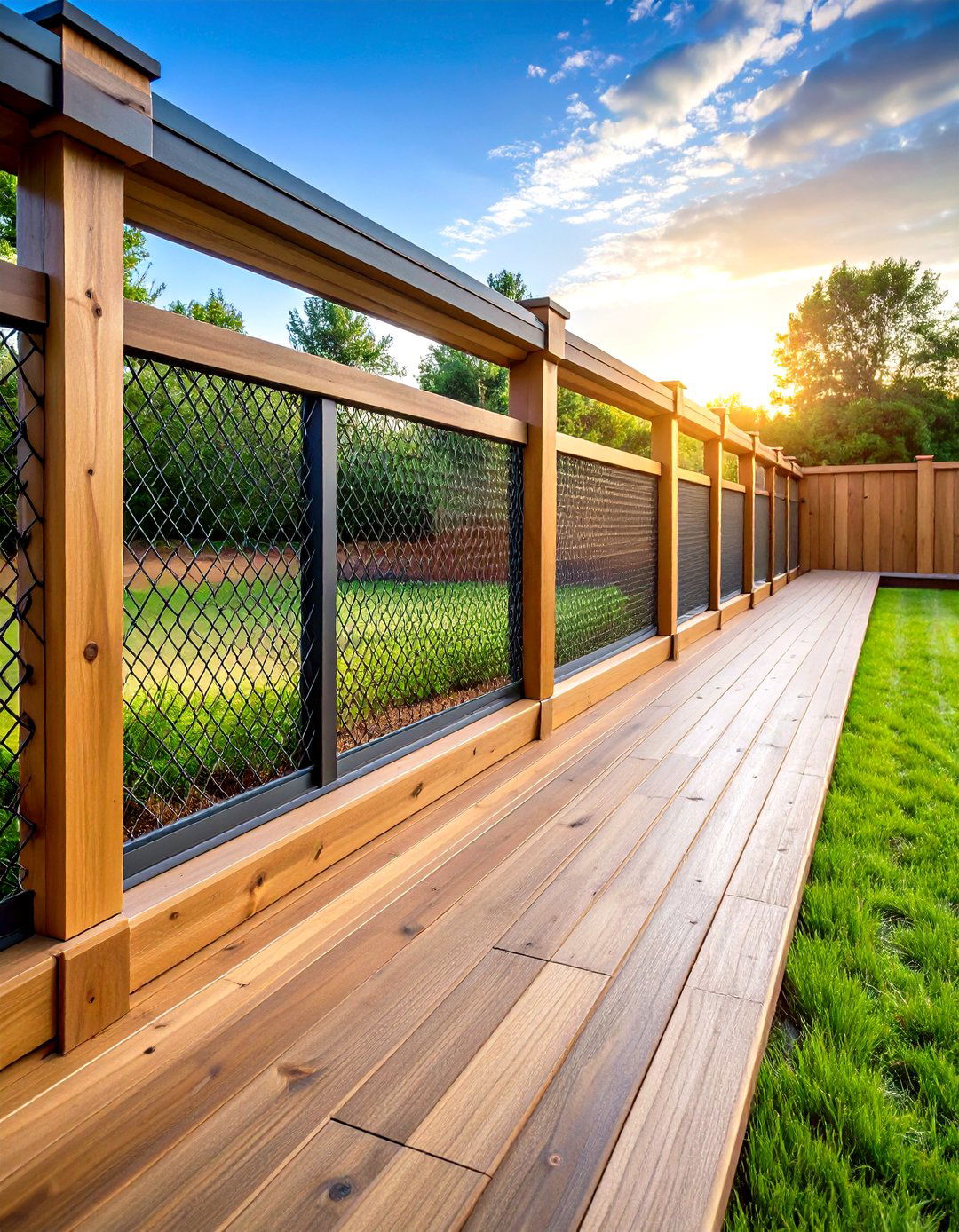
Horizontal hog-wire mesh isn’t just for railings; it’s equally striking as deck skirting when framed between 2×4 top and bottom rails. The 4×4-inch welded openings keep pets out but share long vistas across the yard, making small plots feel expansive. Hot-dip-galvanized panels resist corrosion, and a cedar picture frame softens the farm aesthetic. Install removable carriage bolts on one side so individual sections lift out for crawl-space access. Shield the bottom edge with river rock to deter weeds poking through the mesh. DIY Home Center
17. Brick or Masonry Veneer Deck Skirting
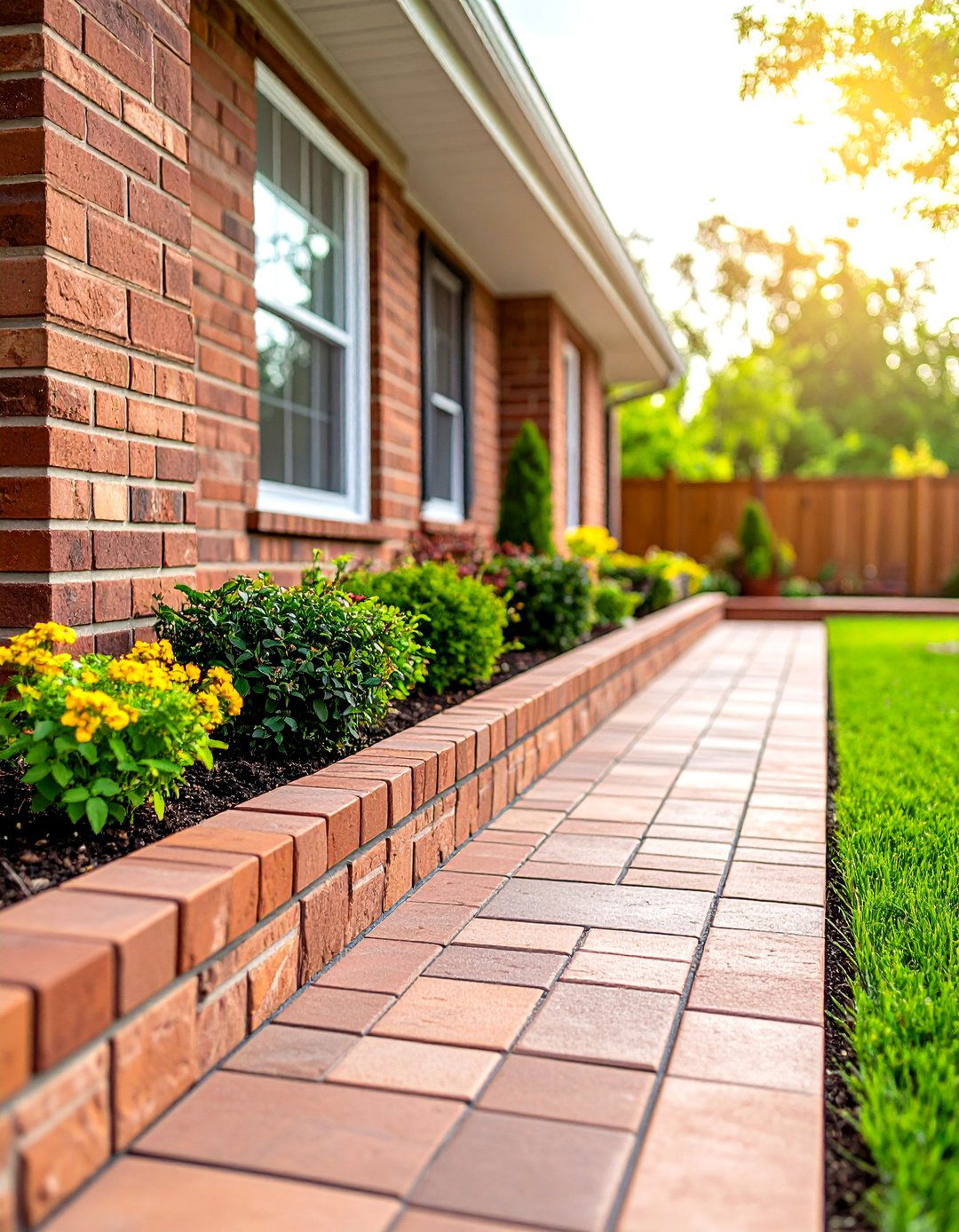
When a deck adjoins a brick home, matching brick-veneer skirting creates architectural continuity. Lightweight thin-brick slips adhere to cement-board backer screwed to the deck rim, adding only a few pounds per square foot—safe for standard framing. Tuck-point mortar joints every 4 feet with flexible sealant to absorb seasonal deck movement and prevent hairline cracks. Accent soldier-course bricks at stair risers for custom flair. For tall decks, break the brick visually with a cedar cap rail before continuing veneer downward to grade. The Spruce
18. Reed or Bamboo Screen Deck Skirting
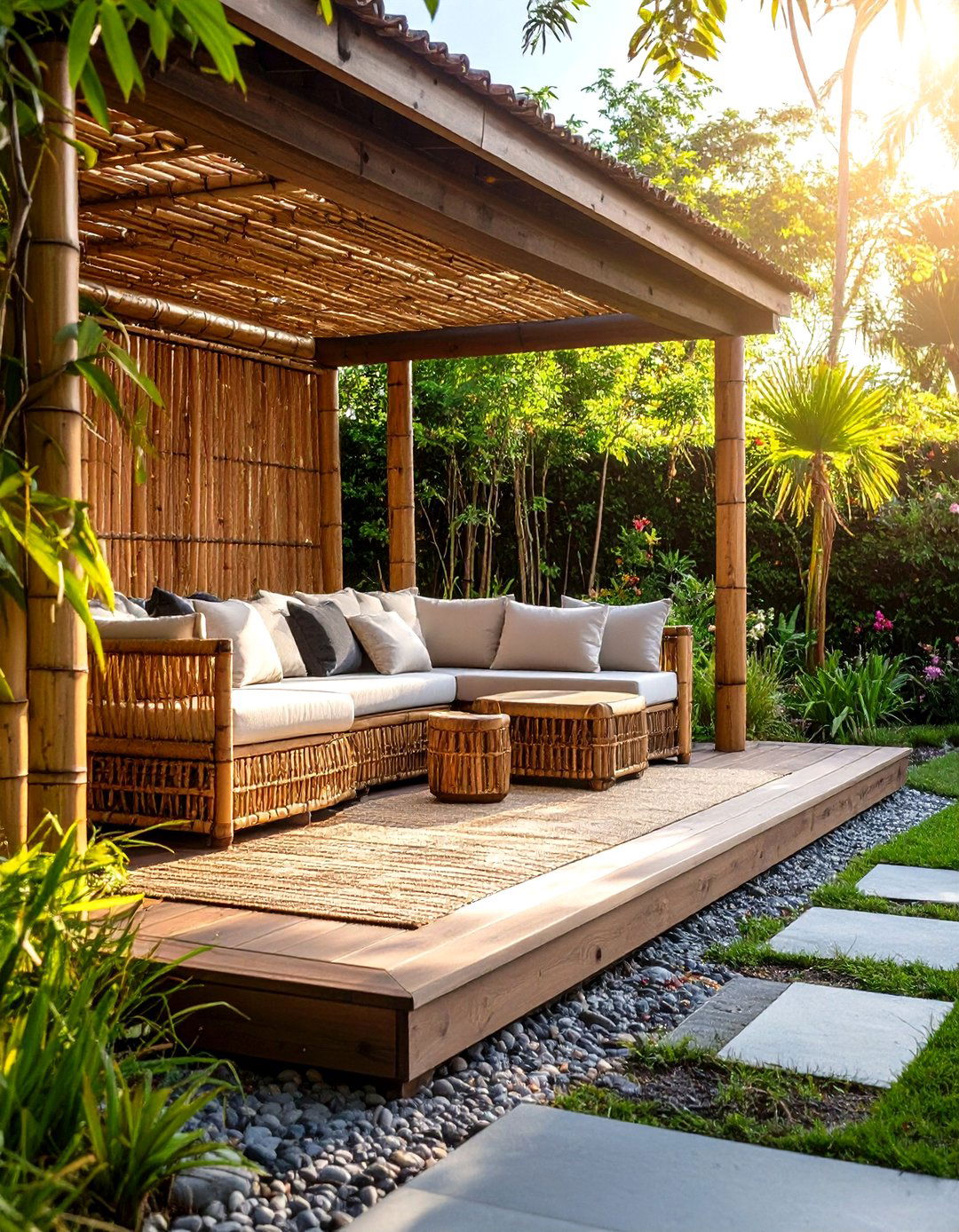
Reed fencing and split-bamboo rolls grant quick tropical ambience and suit rental properties where permanent construction isn’t permitted. Simply unroll the panels, staple to a pressure-treated frame, and trim excess length with pruning shears. Because reed dries quickly, mildew is rare, but annual UV-resistant sealant preserves color. Behind the thin screen, staple black landscape fabric to hide framing shadows and enhance the natural hues. This affordable option starts under five dollars per linear foot, so refreshing the look each summer is budget-friendly. The Spruce
19. Partial Skirting for Ventilation
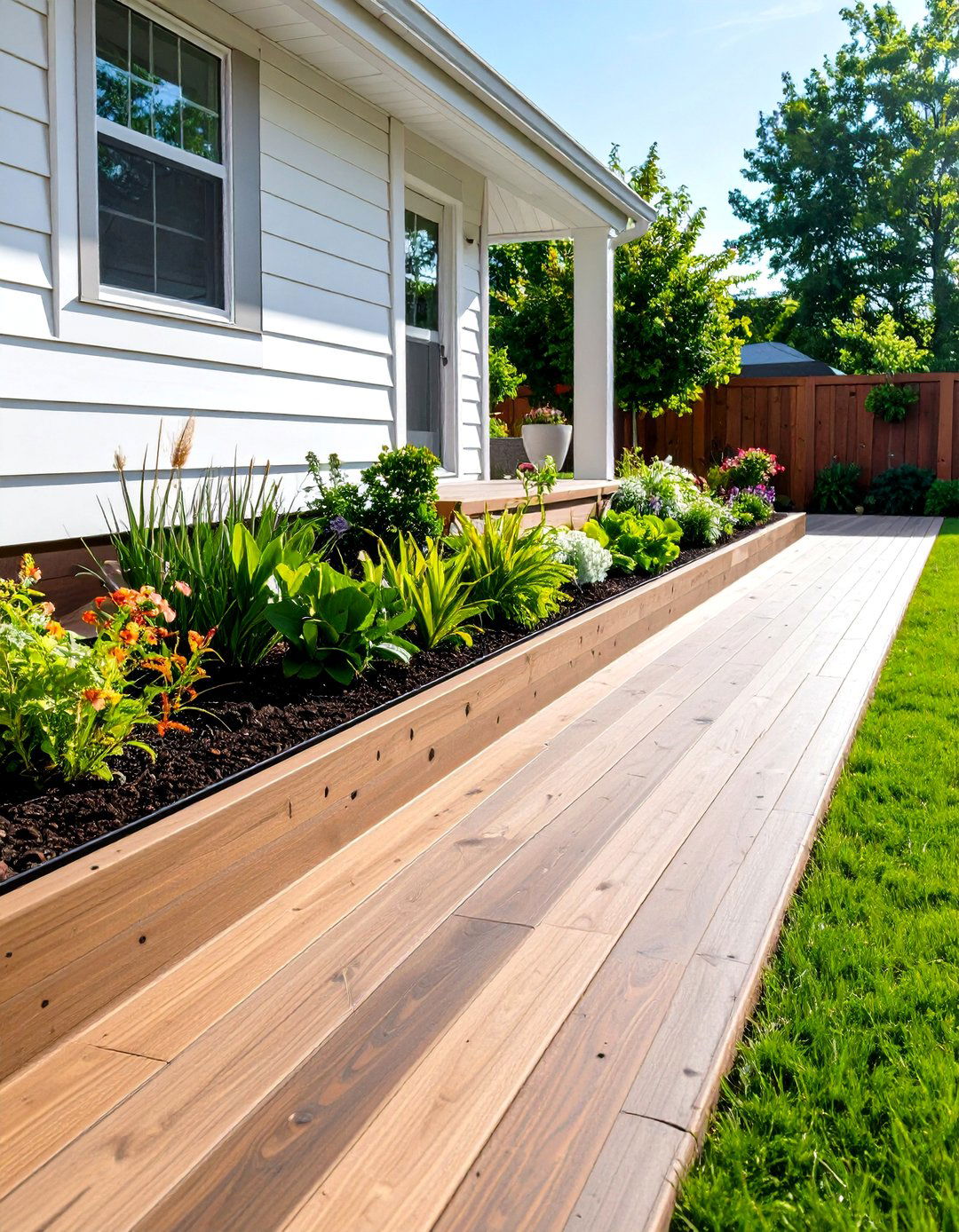
Sometimes less is smarter: partial deck skirting encloses only the most visible sides, leaving rear bays open for maximum airflow. Solid boards across the front hide joists, while 4-inch horizontal slats flank the stairs to maintain stylistic unity. The open back guarantees moisture can’t stagnate, critical in humid regions. Screening the exposed area with fine hardware cloth under the stair stringers keeps raccoons out without hindering ventilation. Partial skirting also cuts material costs by up to 40 percent compared with full wraps—funds you can redirect to upgraded lighting or furnishings. The Spruce Better Homes & Gardens
20. Removable Seasonal Deck Skirting Panels
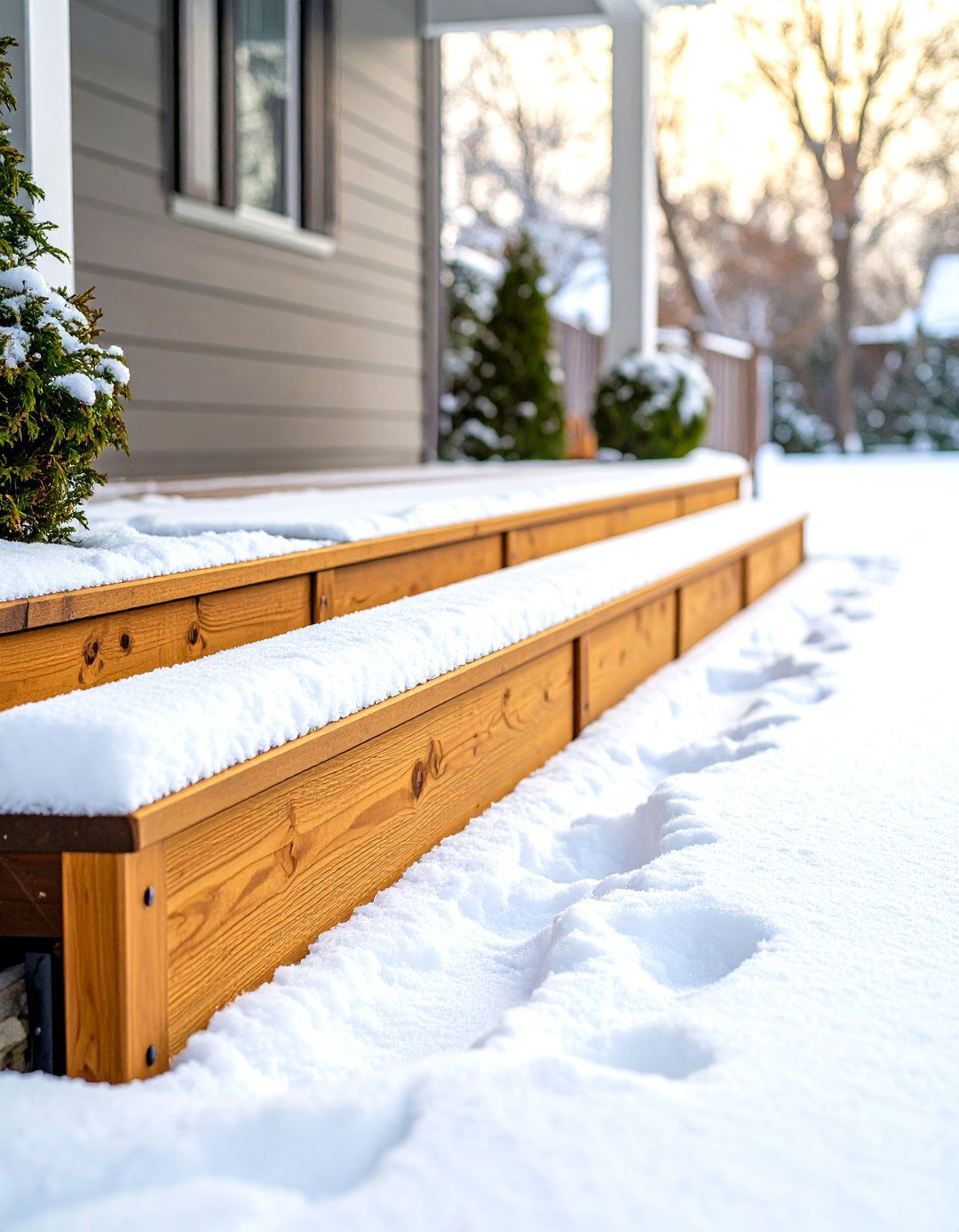
If your deck doubles as storm-shelter storage or hosts occasional plumbing inspections, design removable deck-skirting panels. Build lightweight frames of 1×4 cedar, face them with lattice or mesh, and hang with lift-off hinges over recessed barrel bolts. Number each panel on the inside top rail so they go back in the right order after winter removal. In snowy climates, pulling panels prevents drifting snow from trapping moisture against boards and allows wind to blow through, drying the frame. Reinstall each spring after a quick rinse—no tools beyond a screwdriver required. Better Homes & Gardens
Conclusion:
Whether you favor rustic lattice, sleek metal, living greenery, or storage-smart solid panels, today’s deck-skirting choices let you tailor airflow, maintenance, and style in equal measure. Mixing materials or choosing removable sections can solve site-specific challenges, while durable composites, PVC, and faux stone keep upkeep low for years. By matching the skirting to your deck’s architecture—and following simple framing, ventilation, and access guidelines—you’ll transform an often-ignored space into a functional, beautiful feature that elevates the whole backyard experience. Better Homes & Gardens


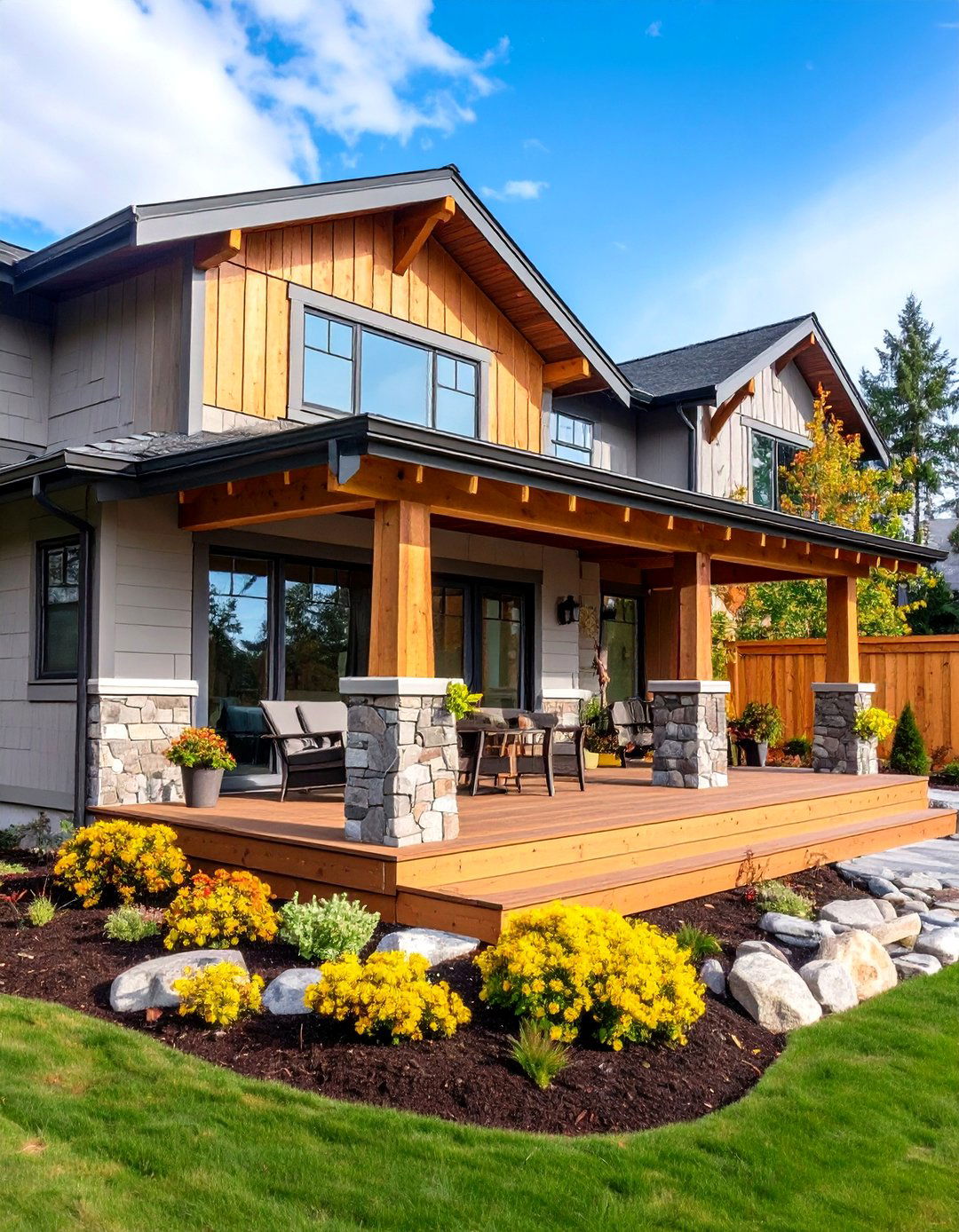
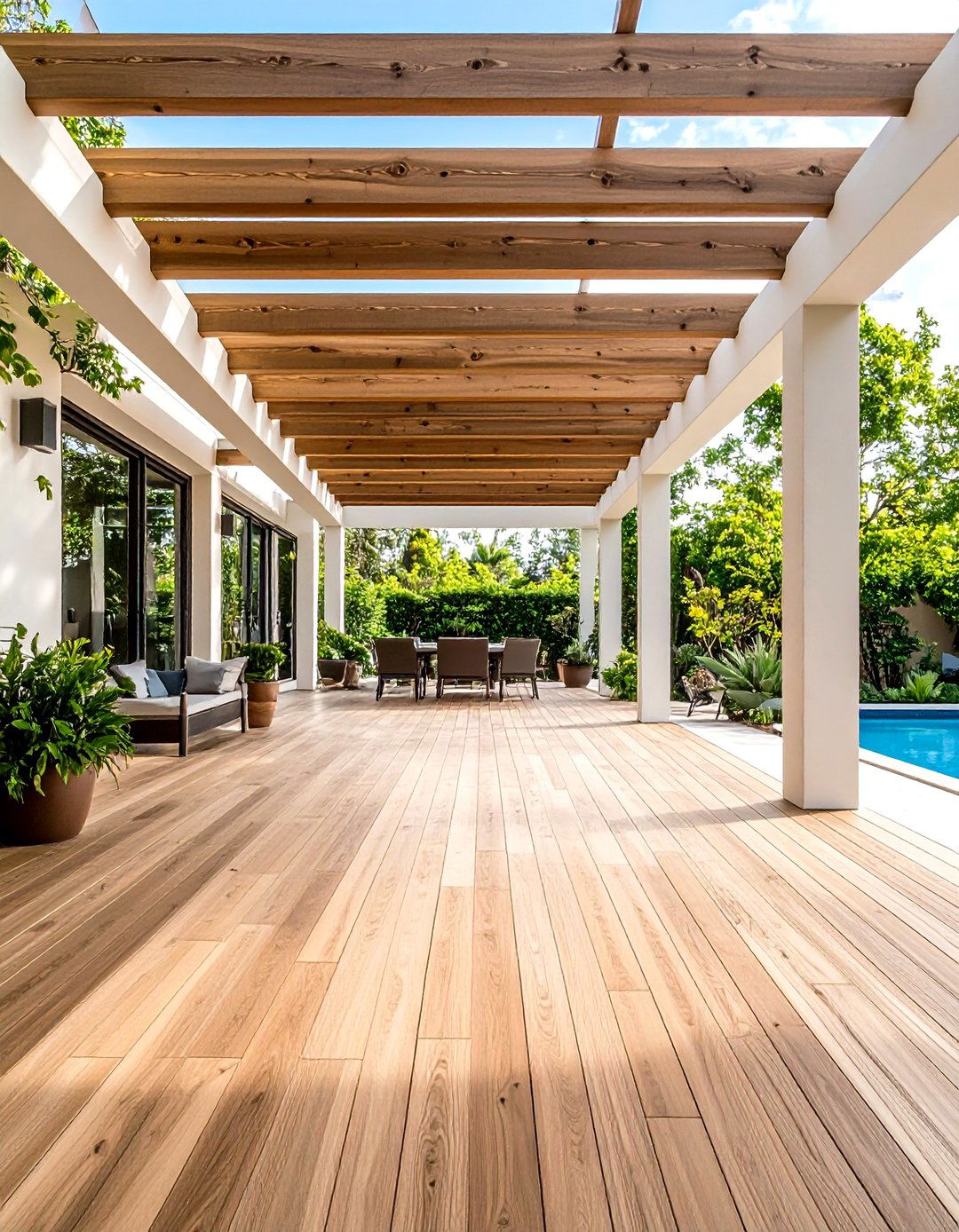
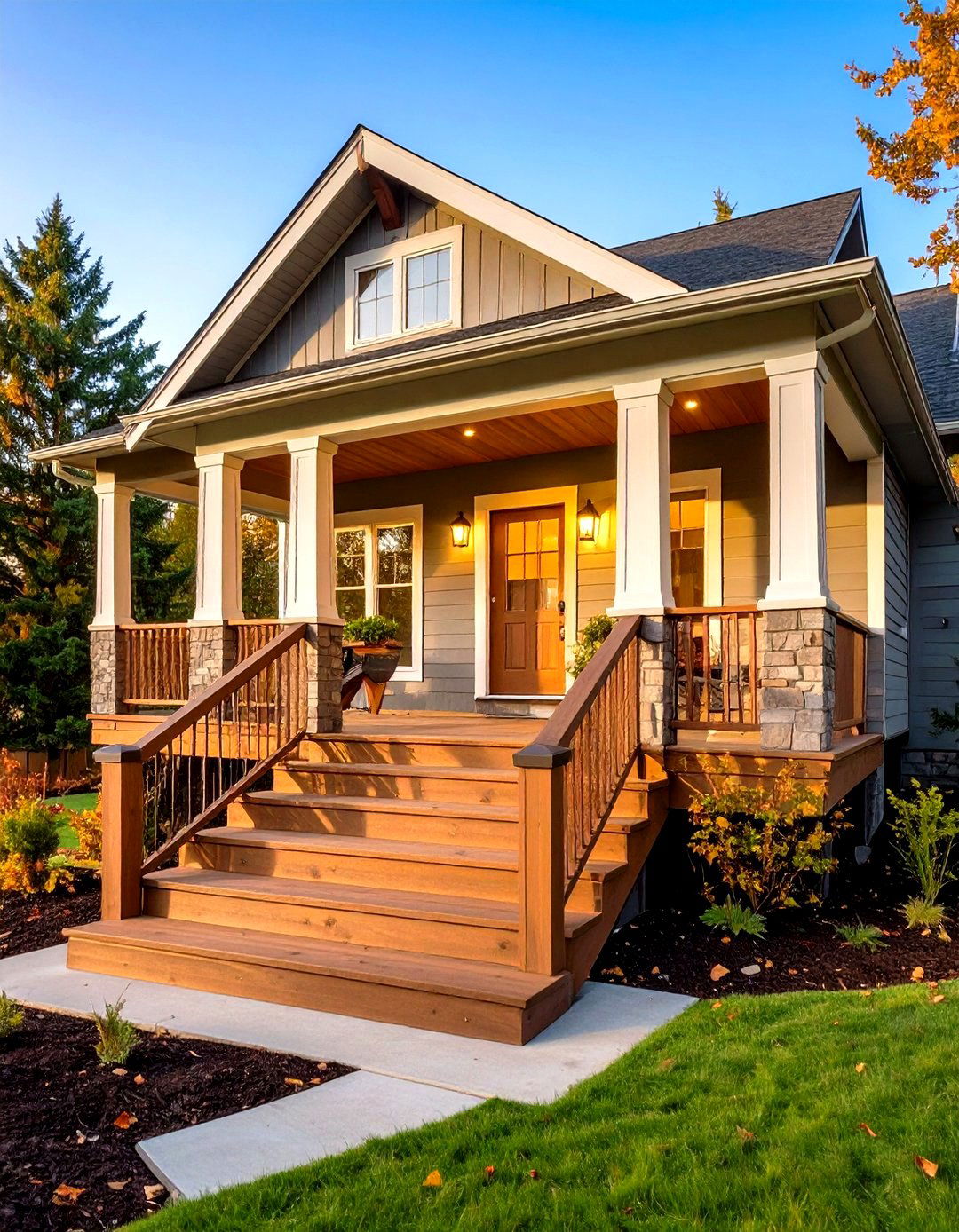

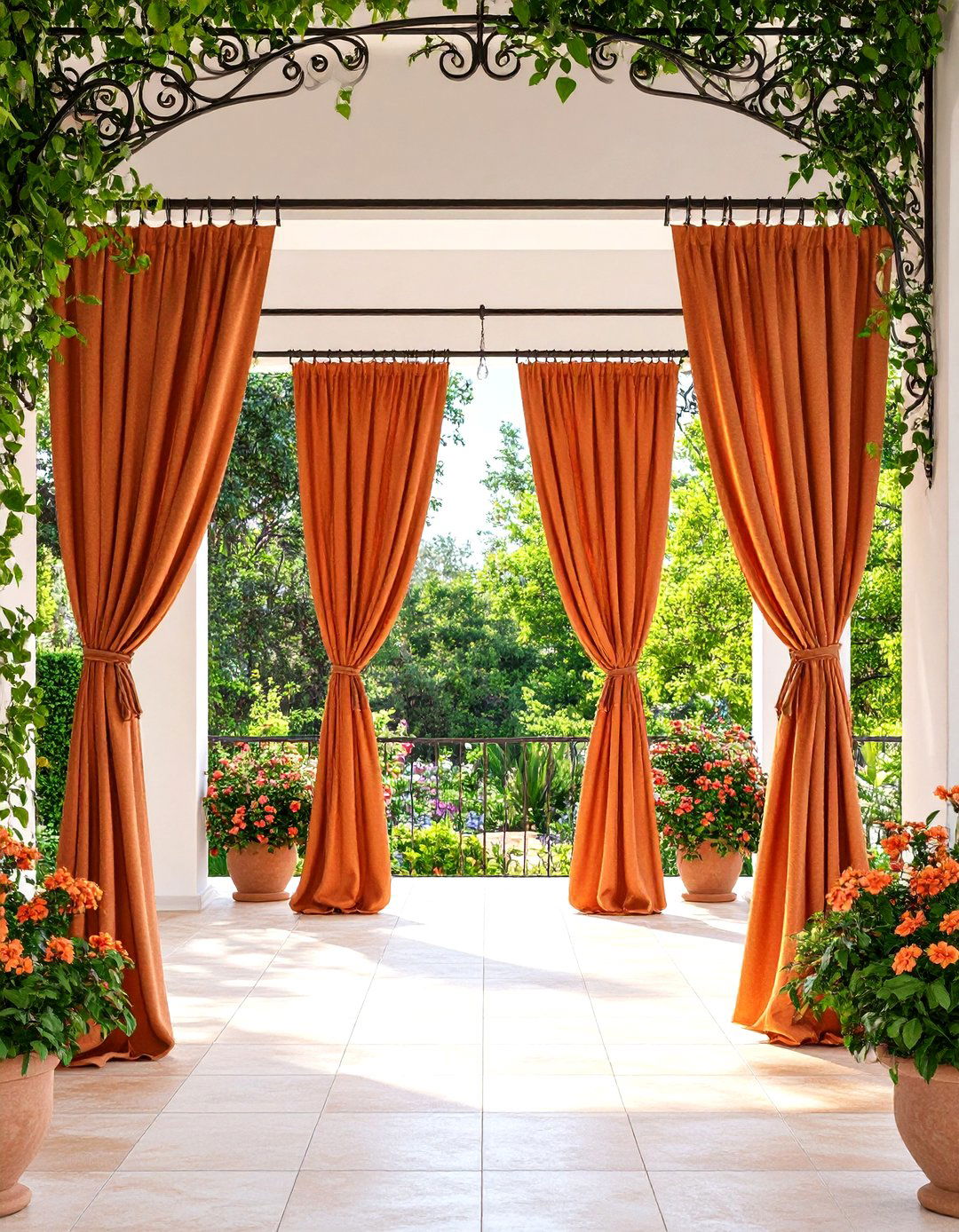
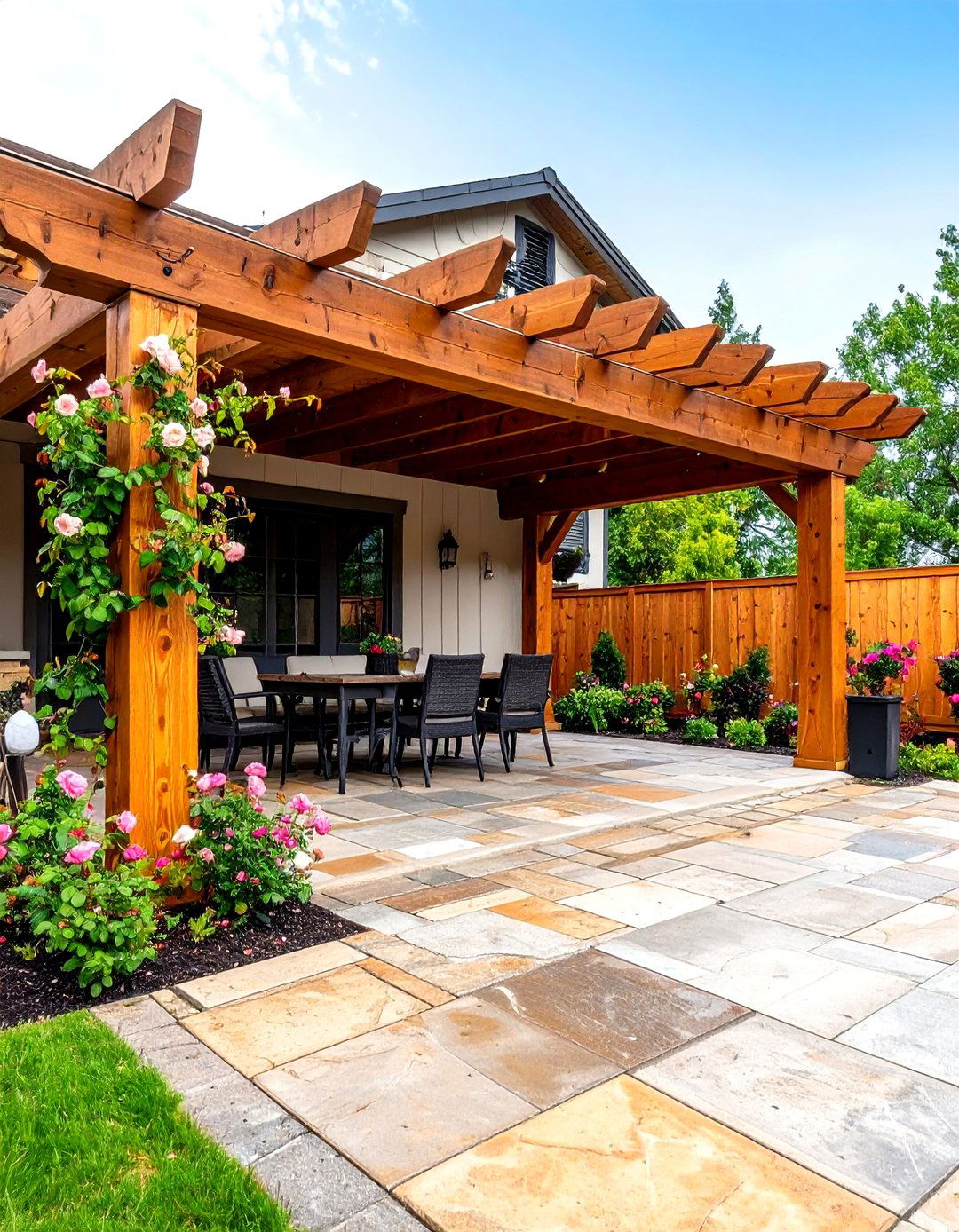
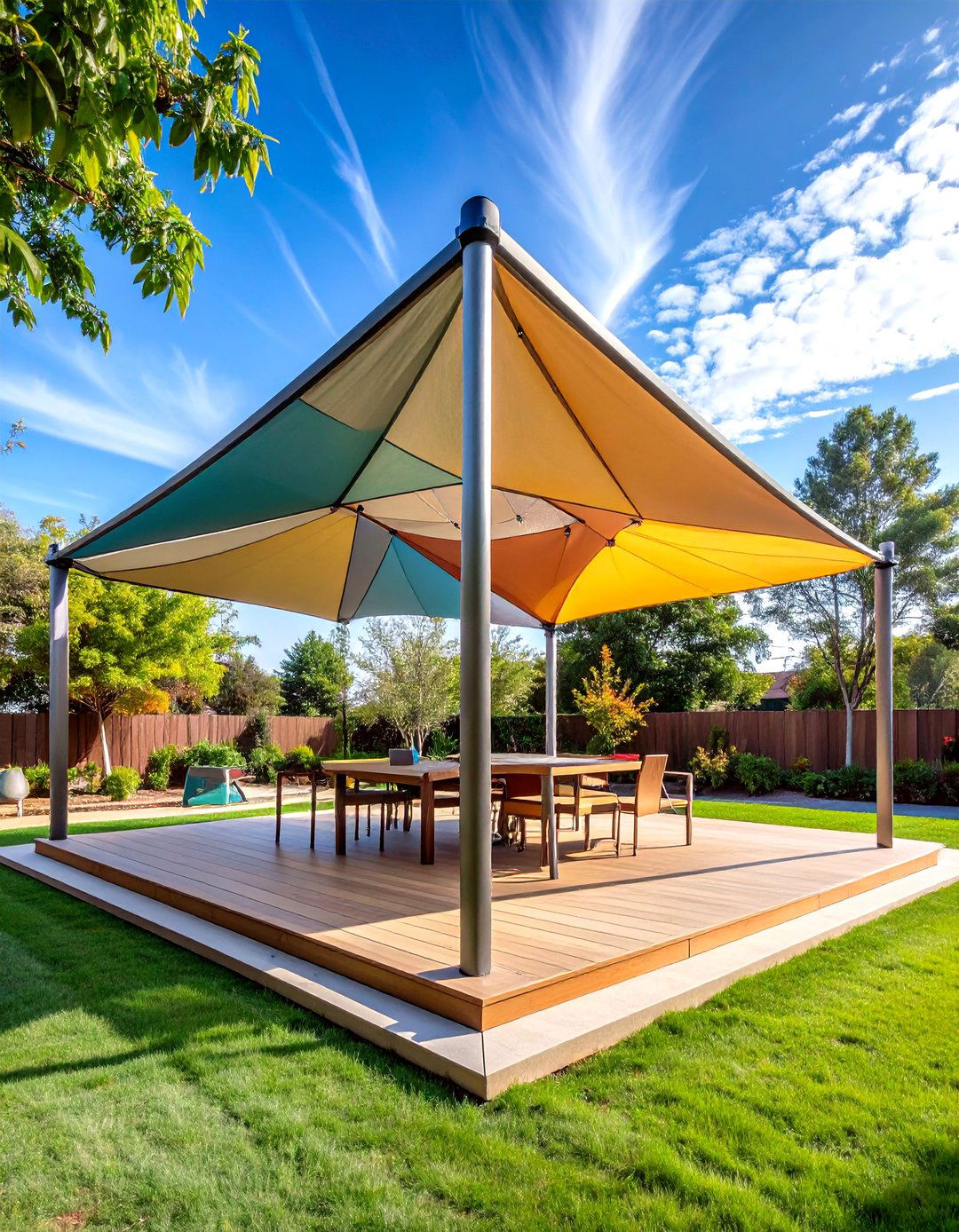
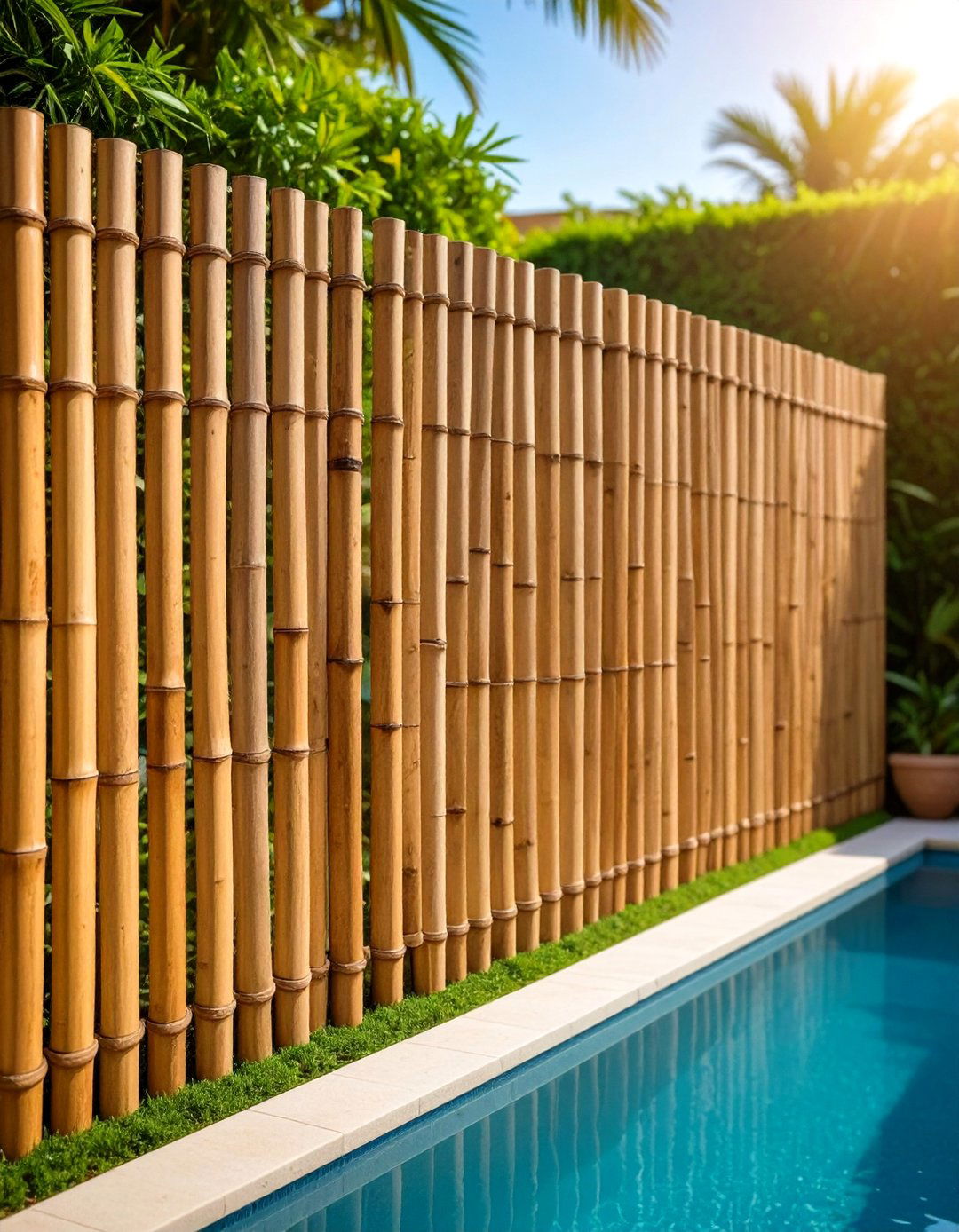
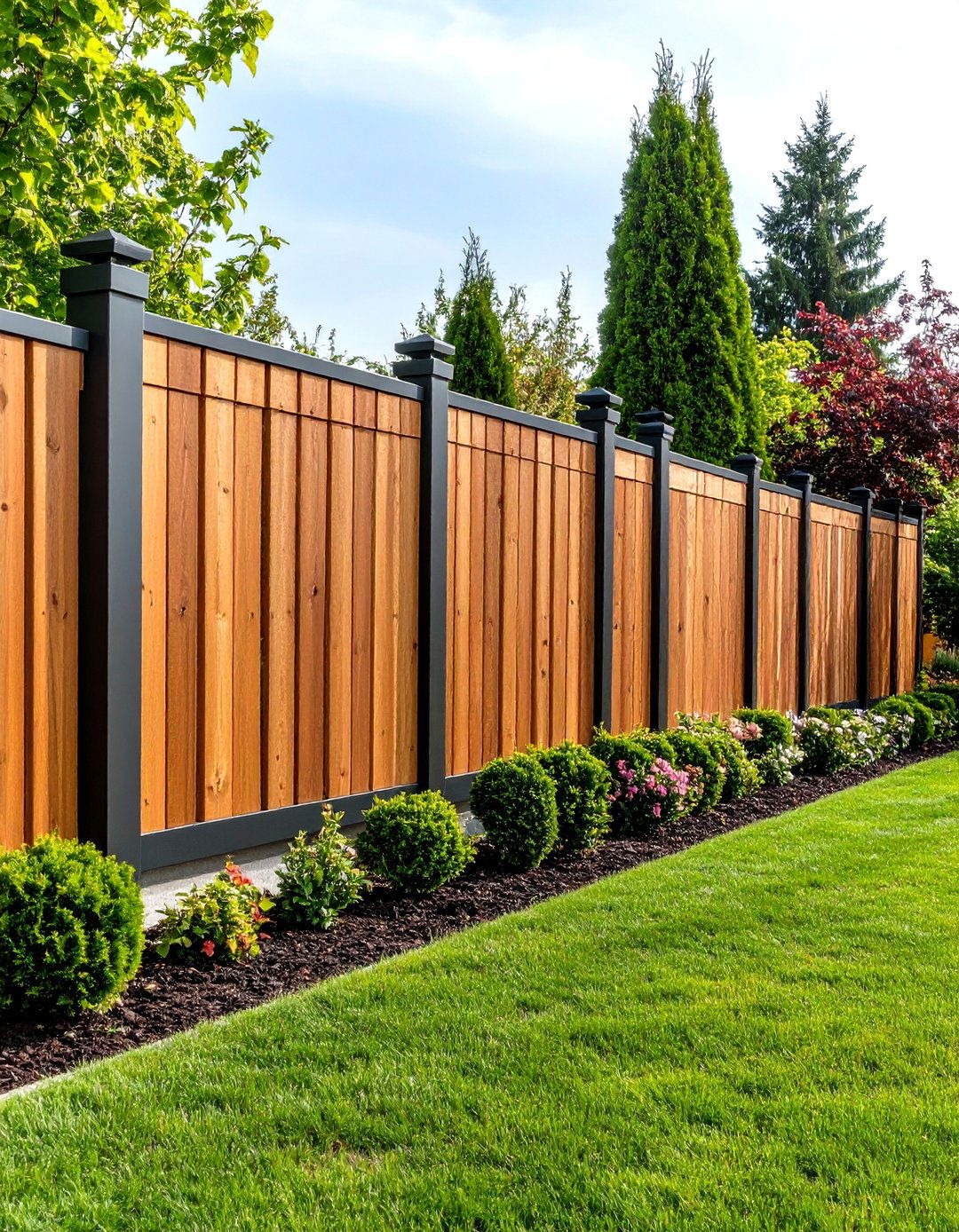
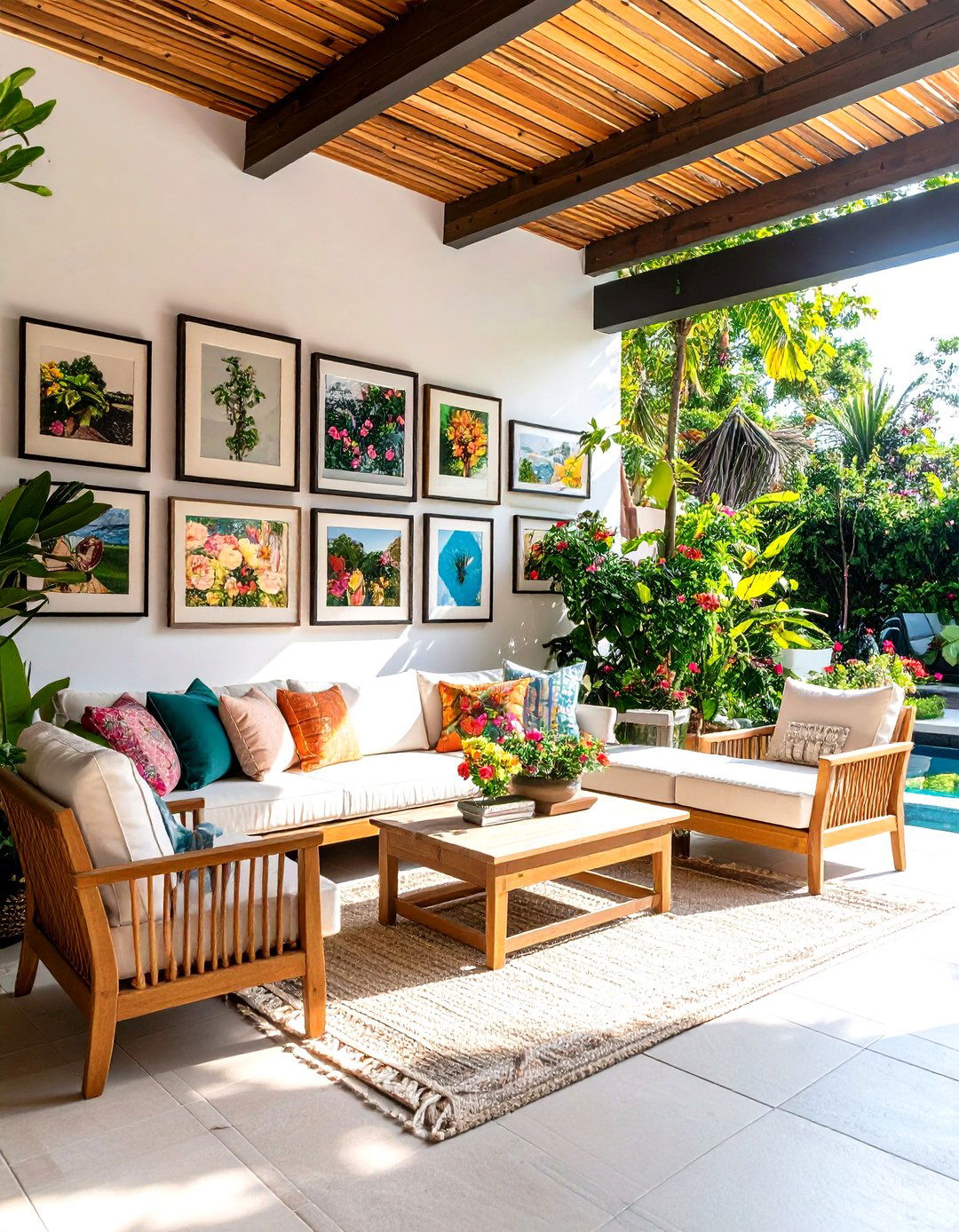
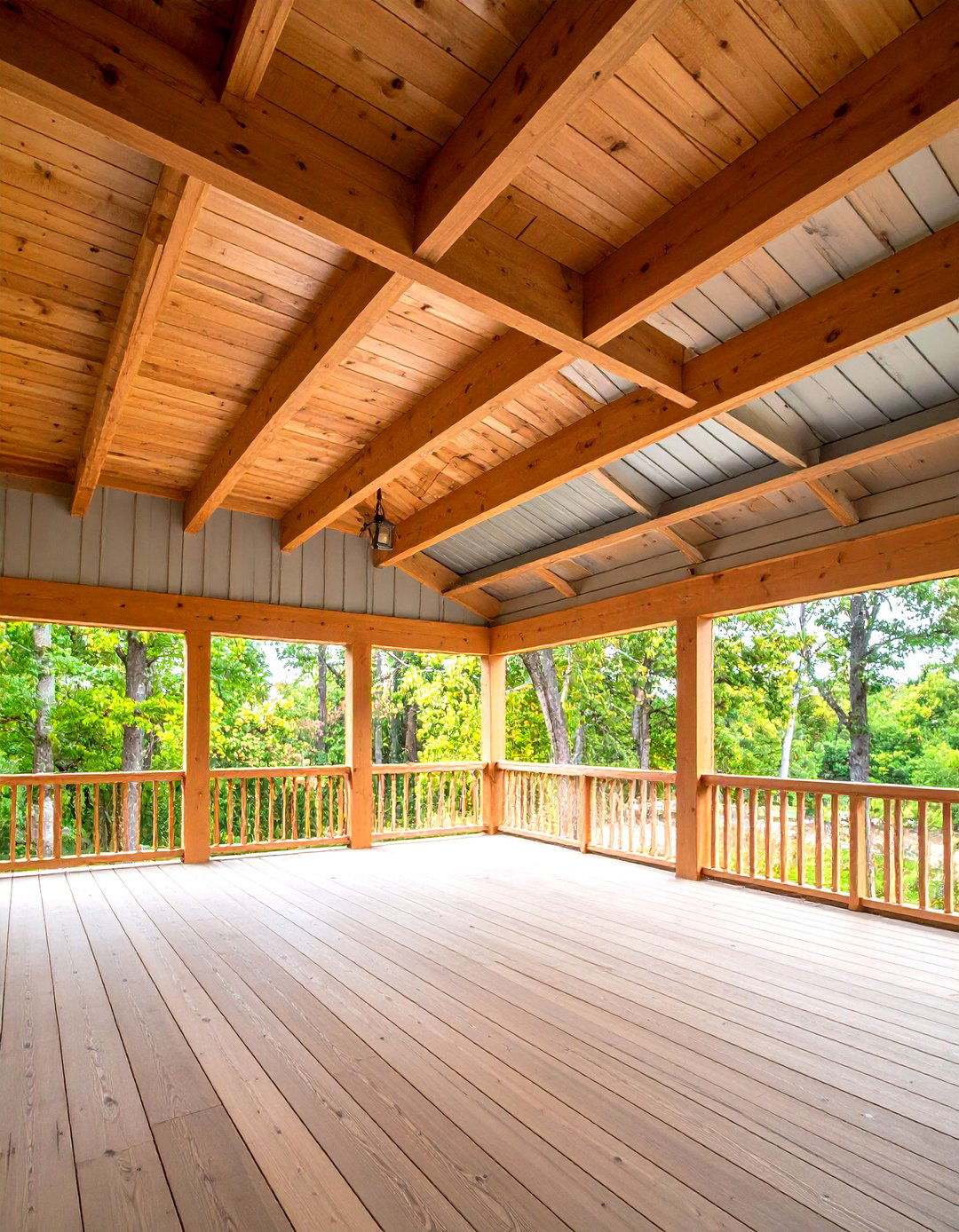
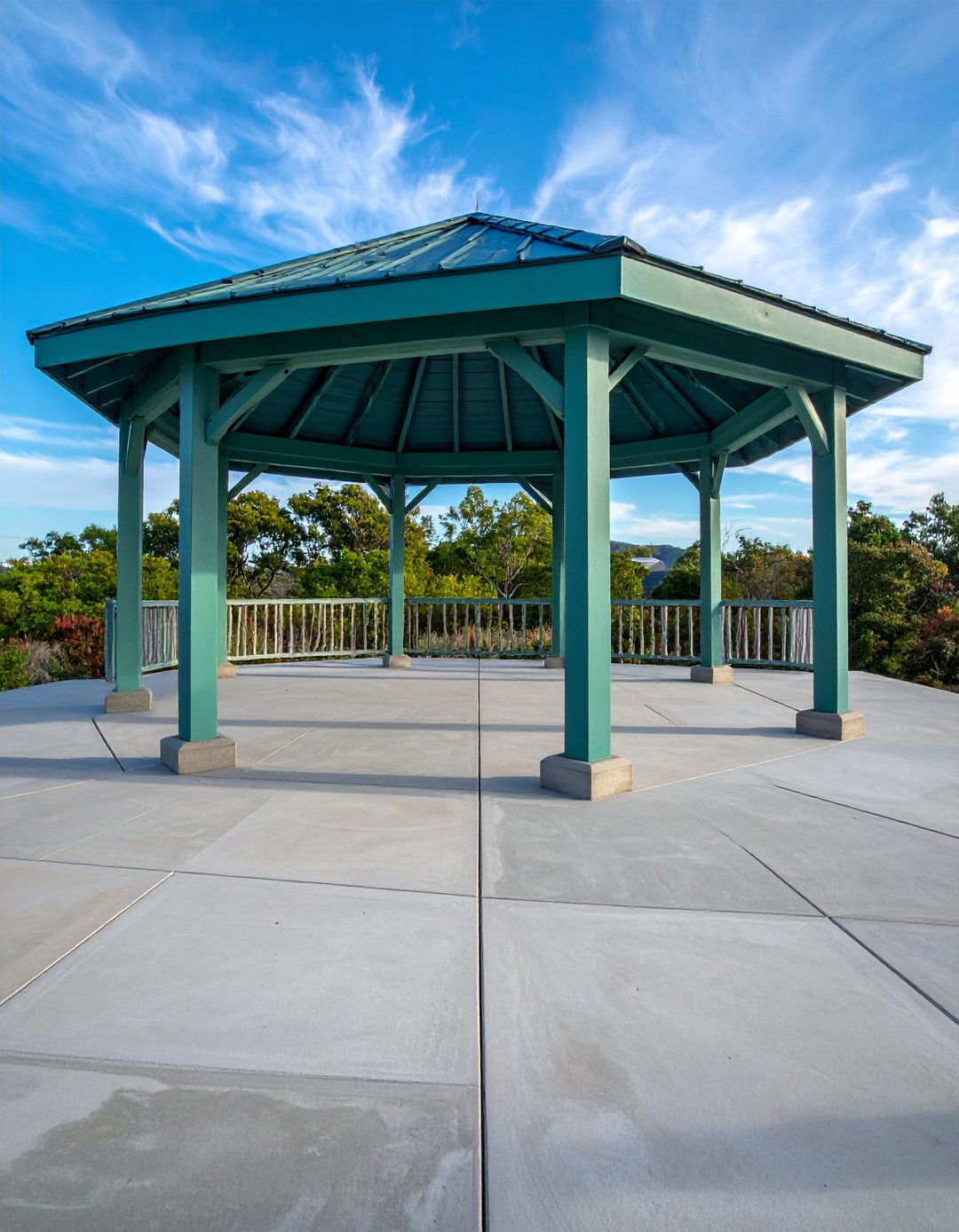
Leave a Reply